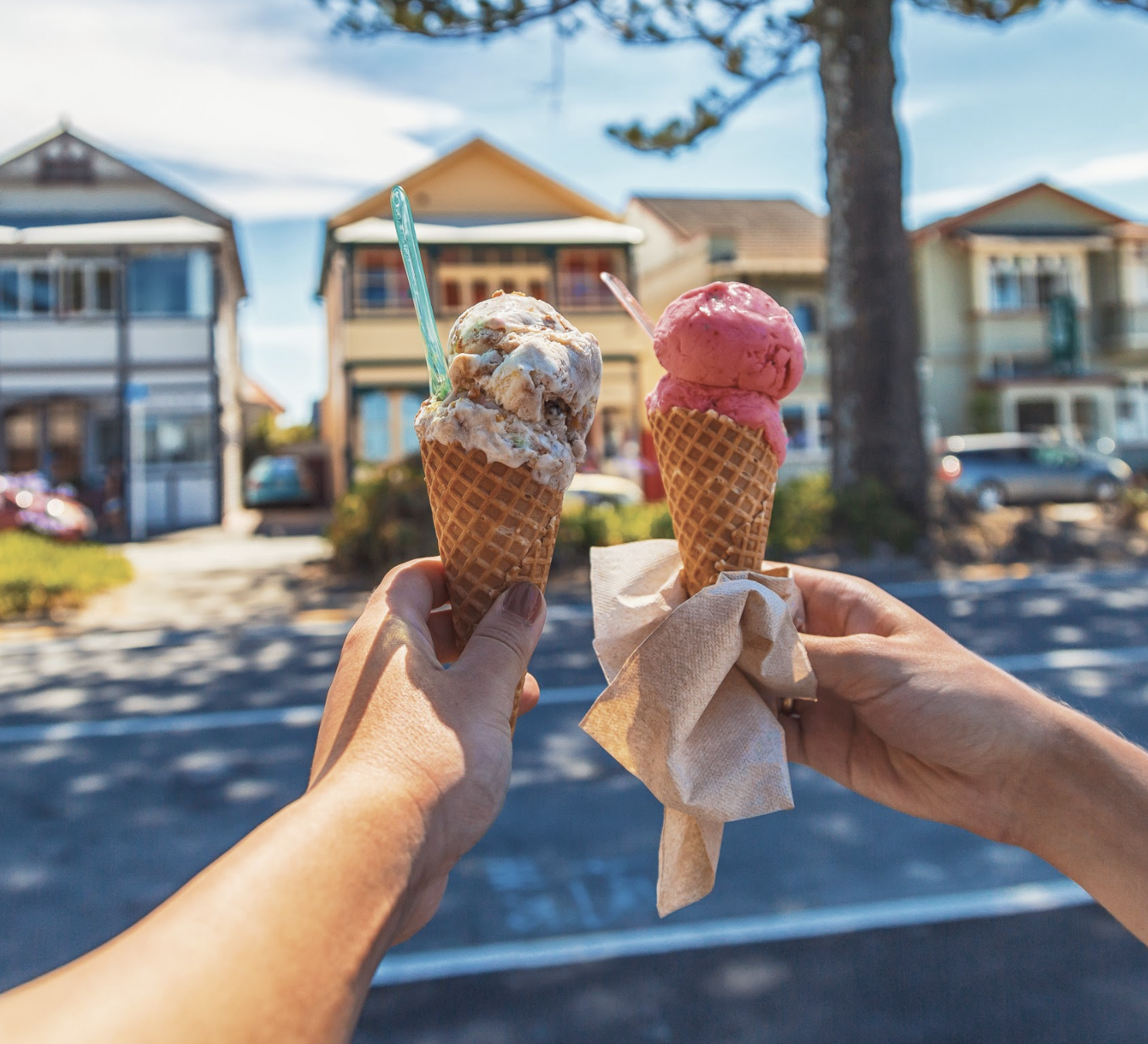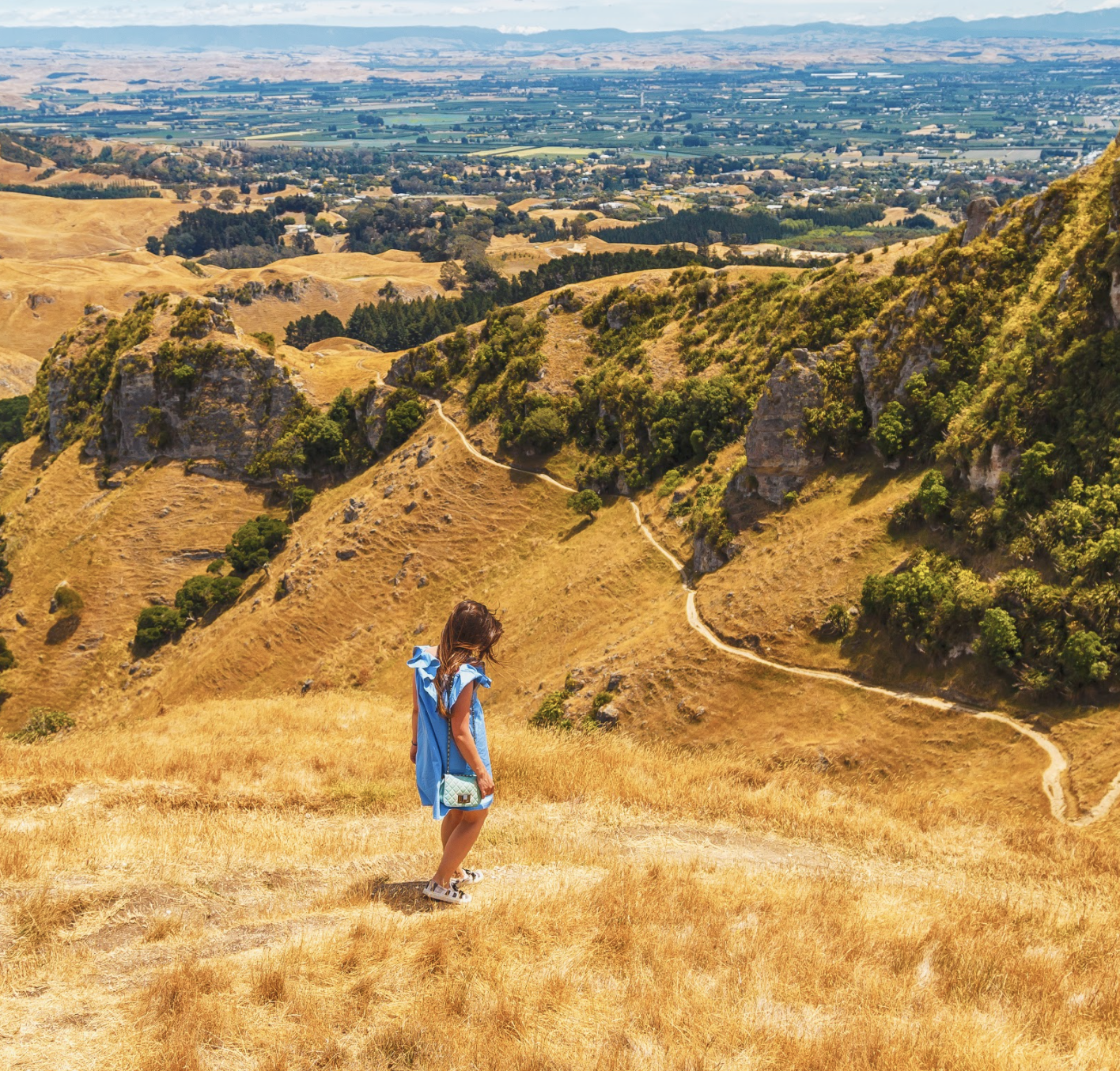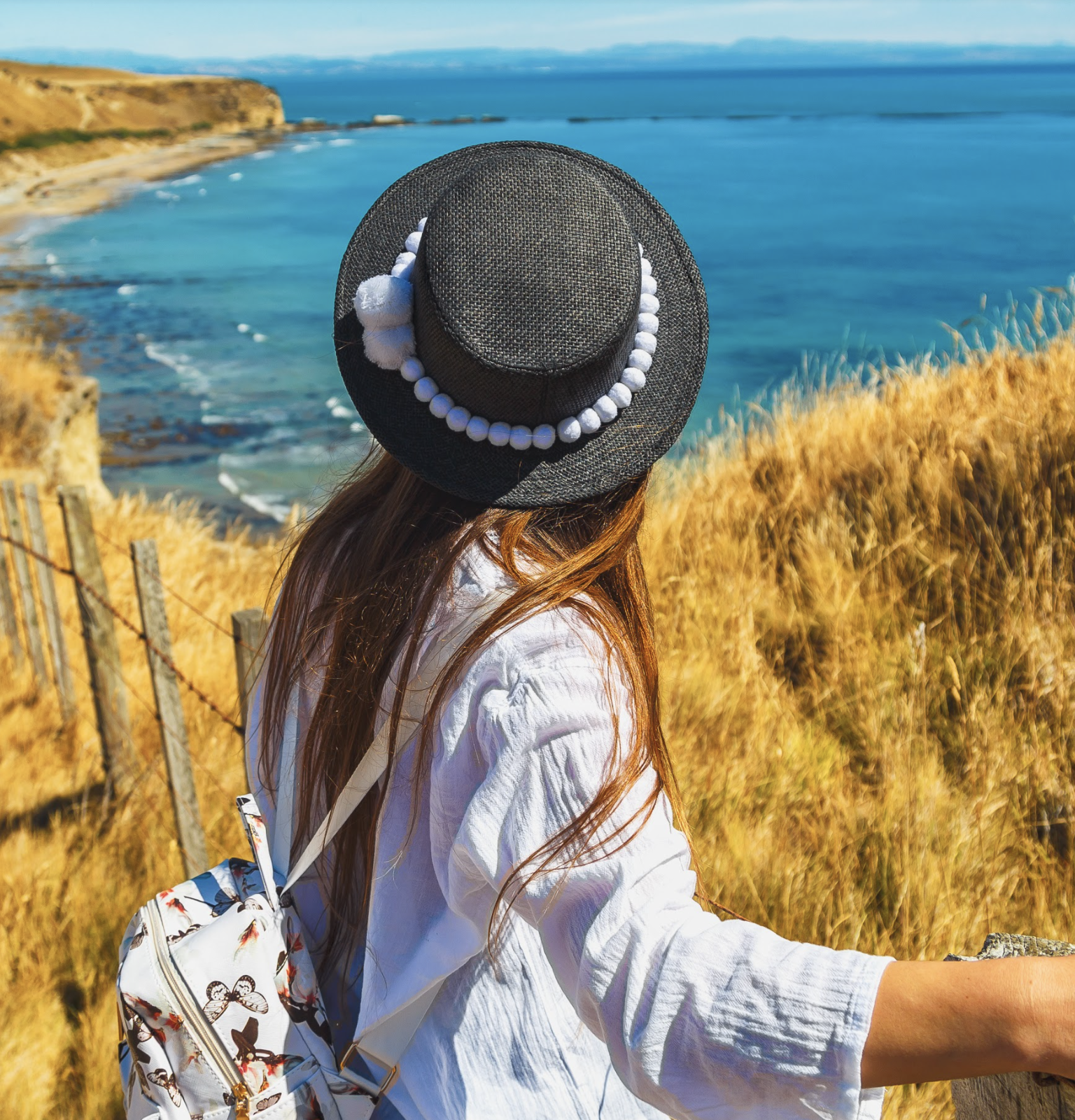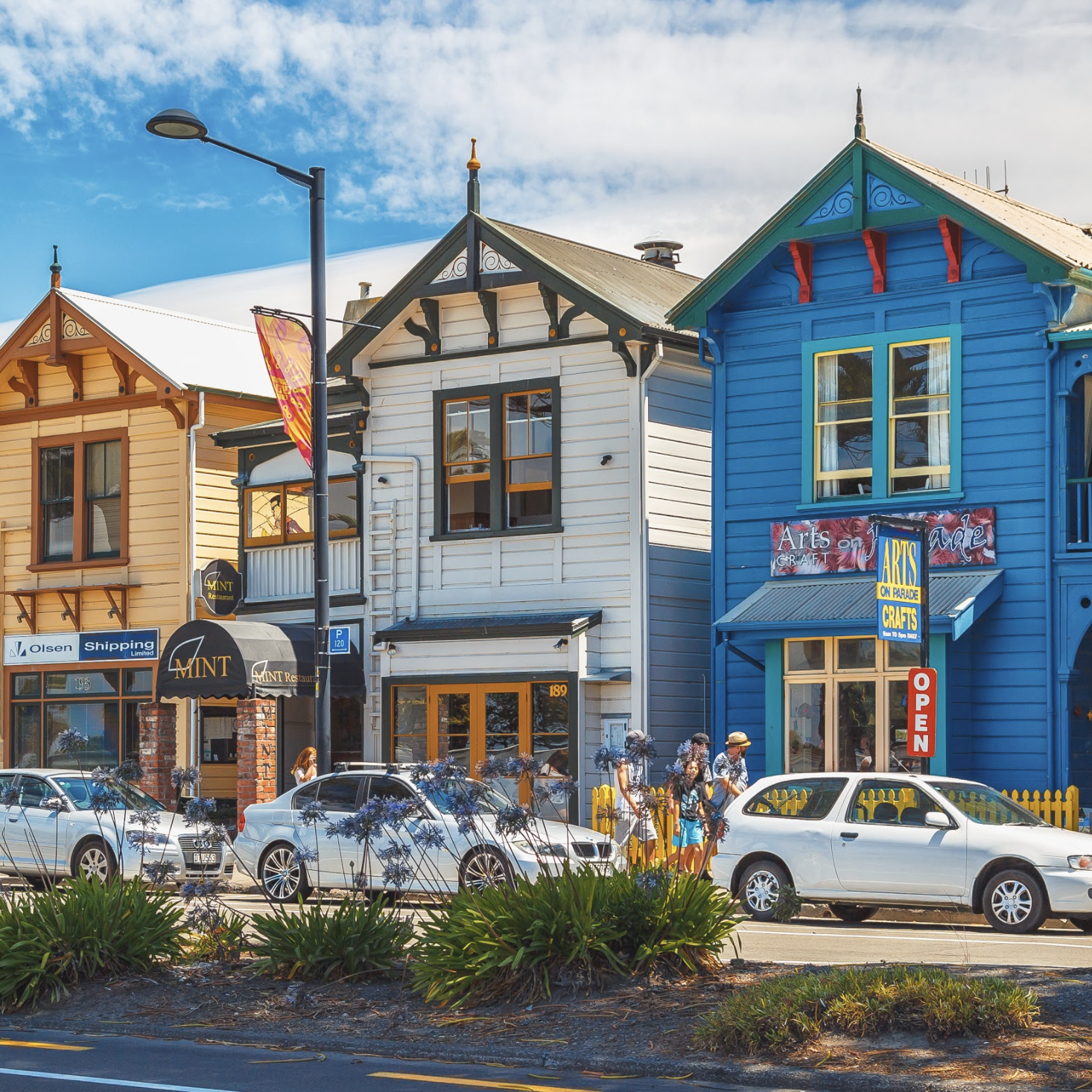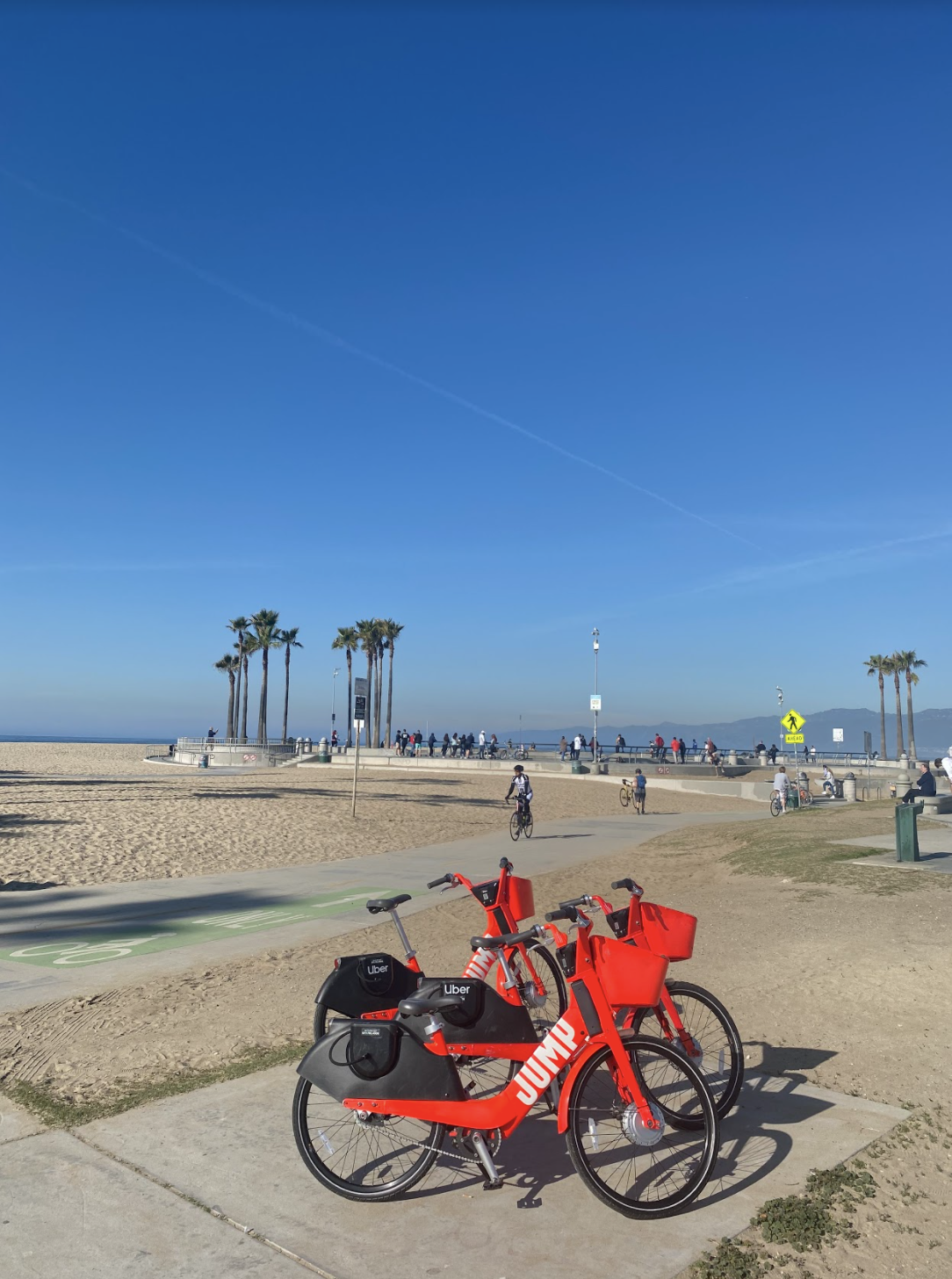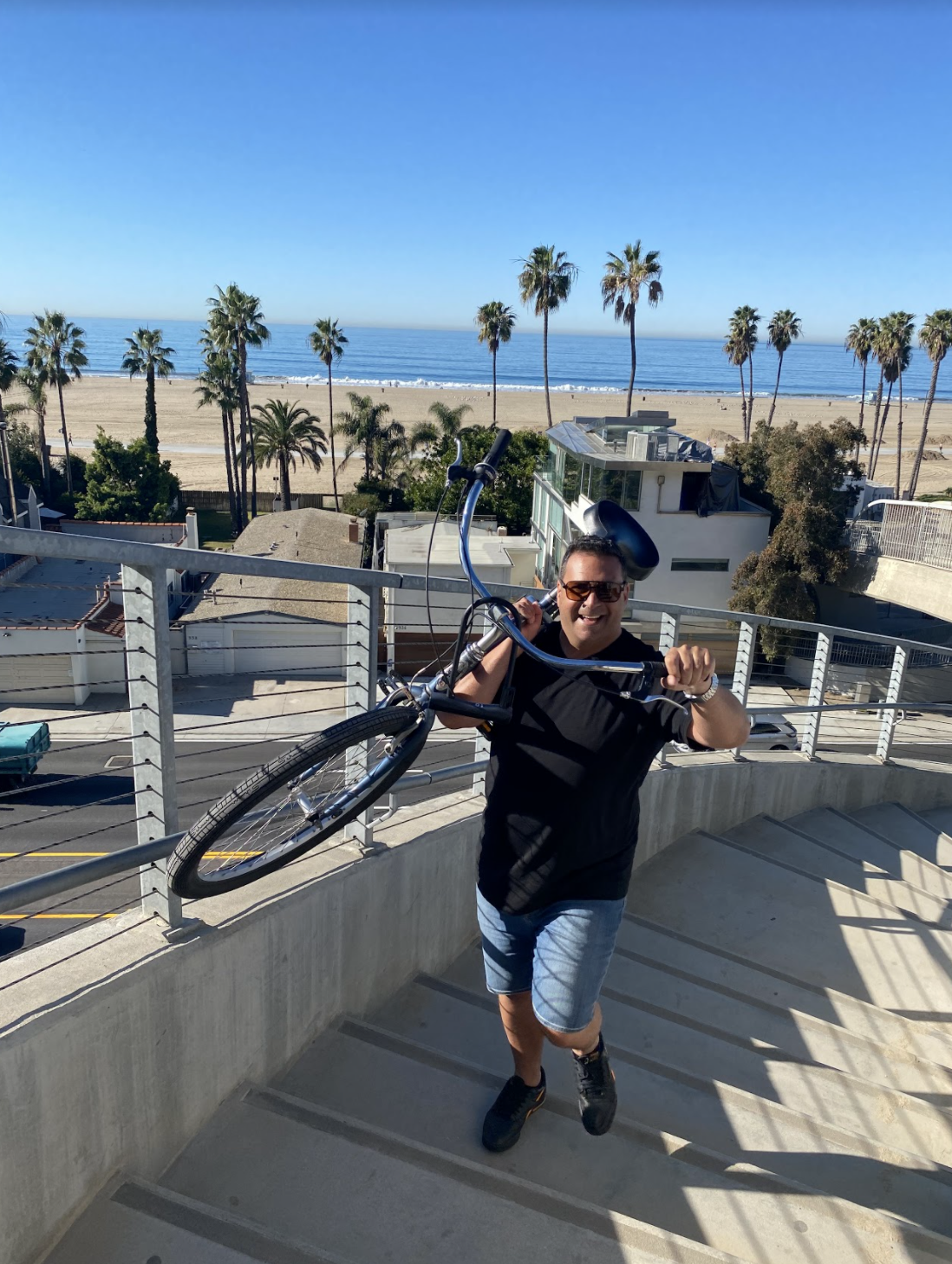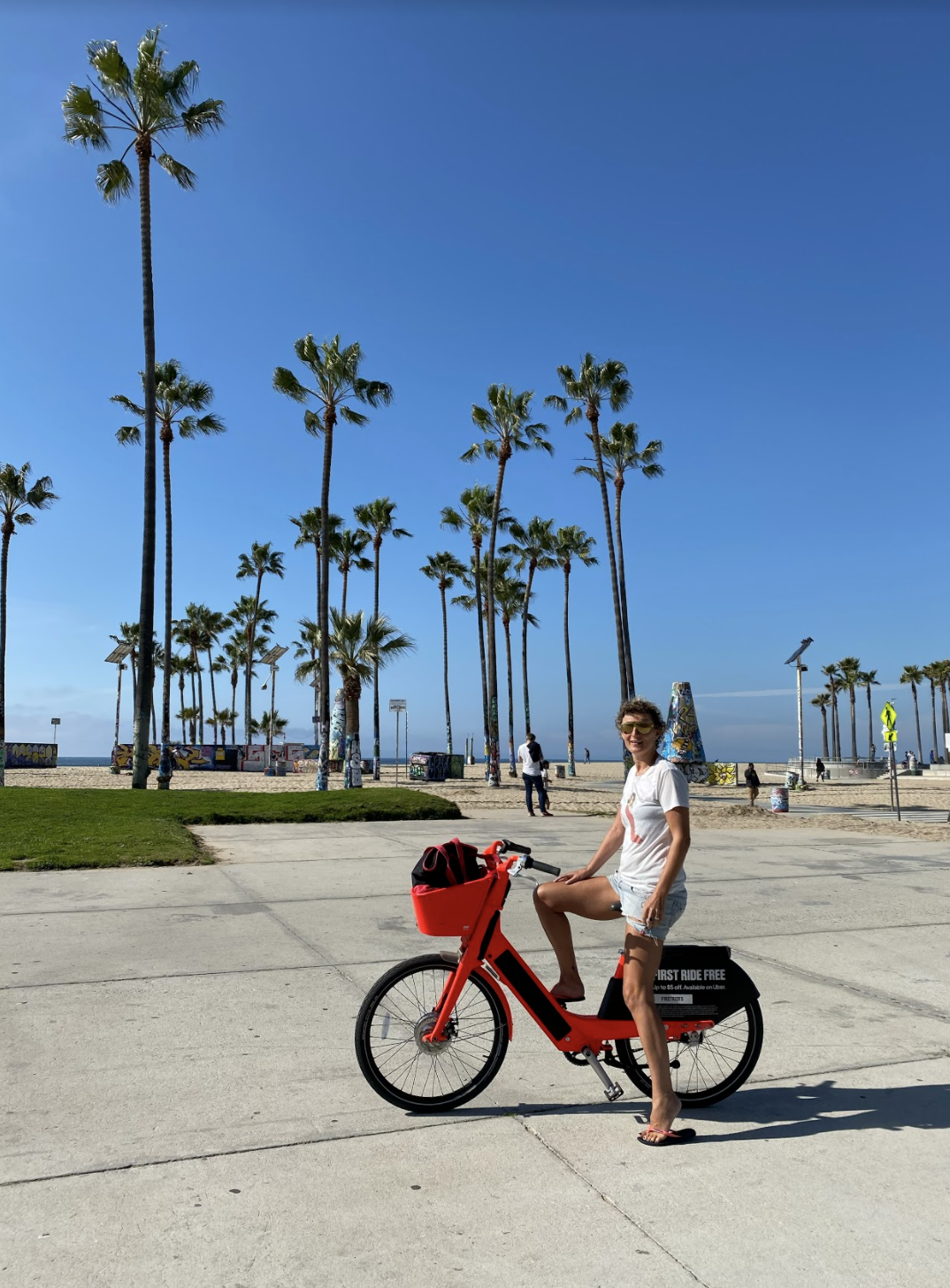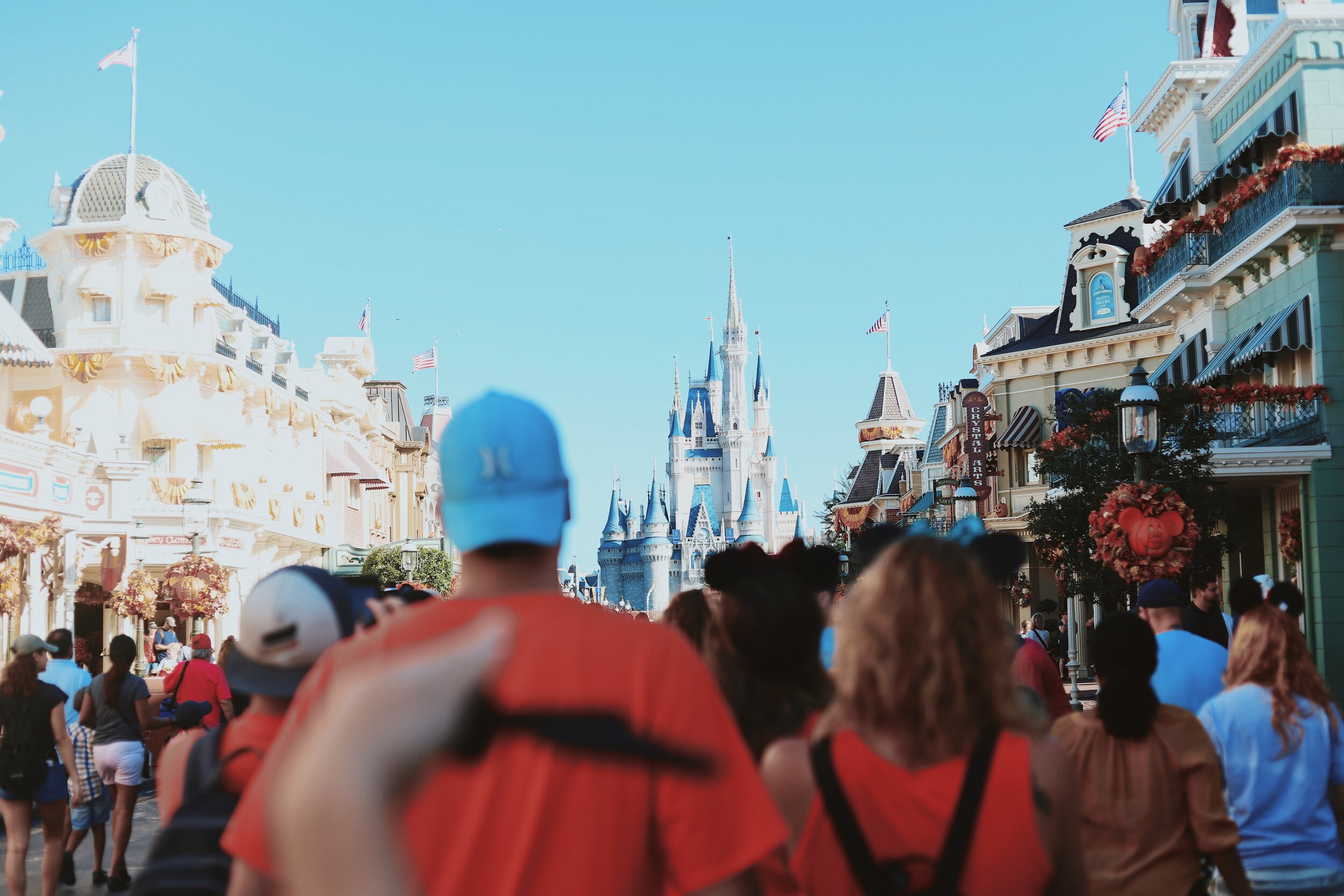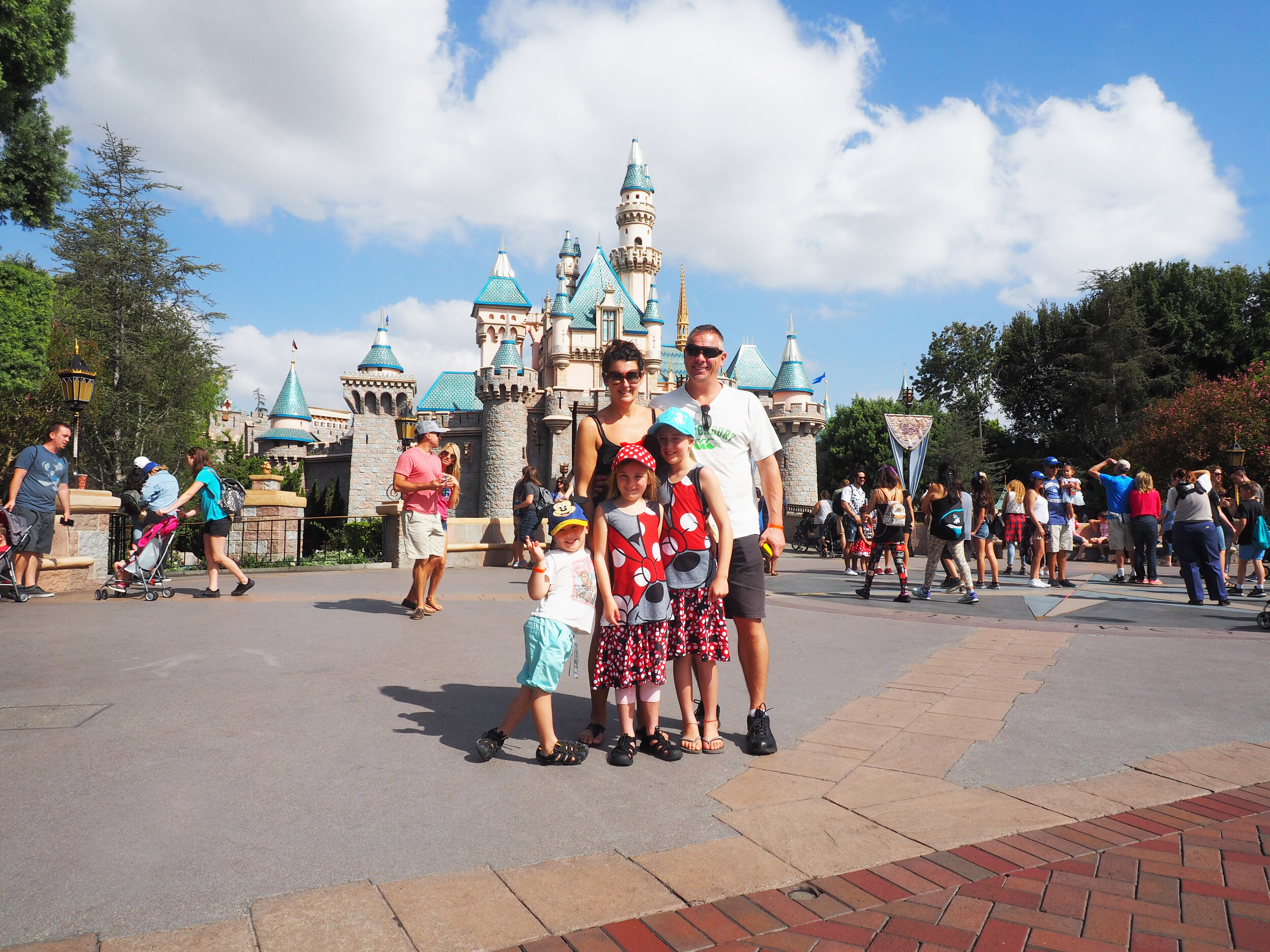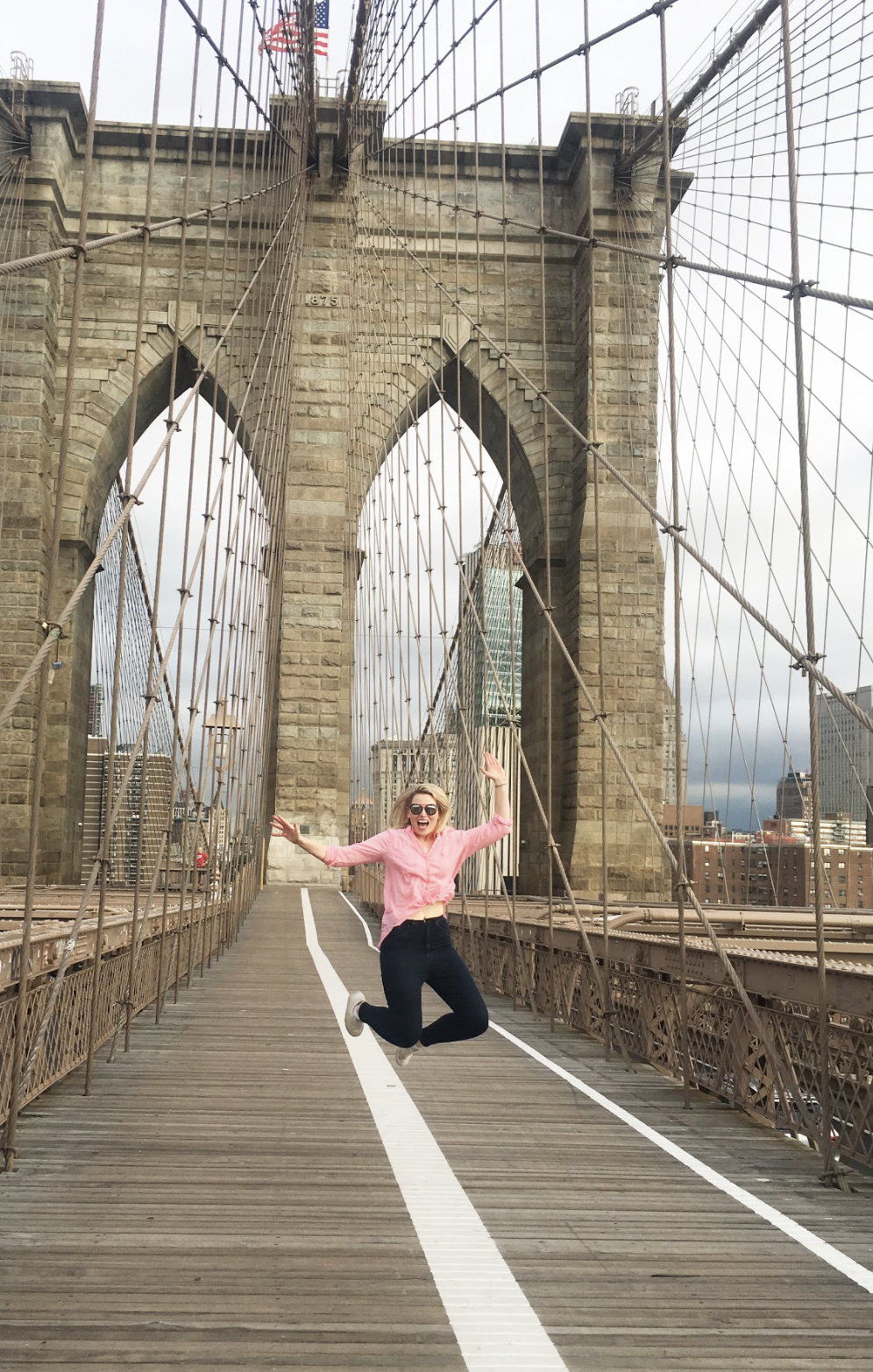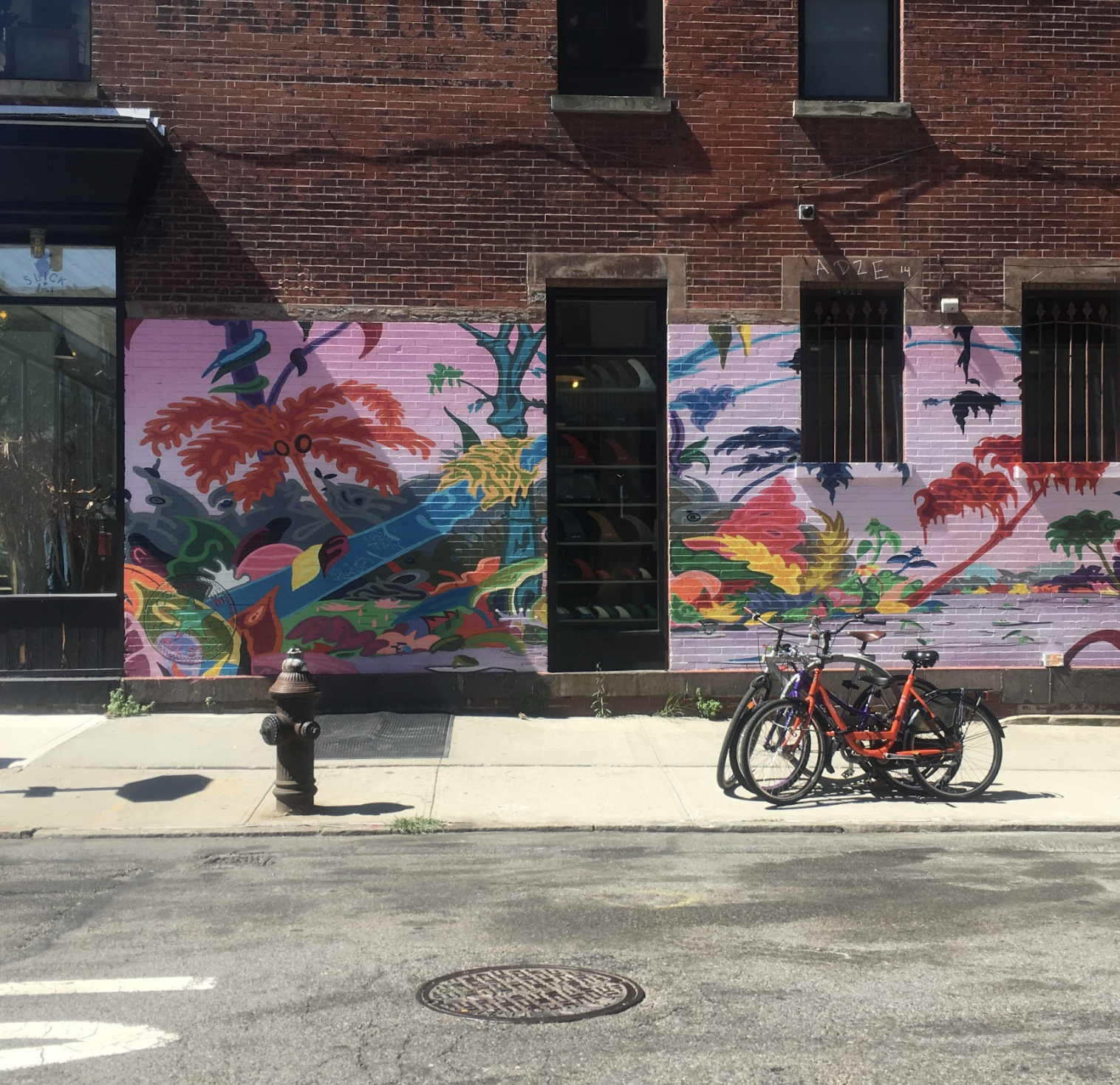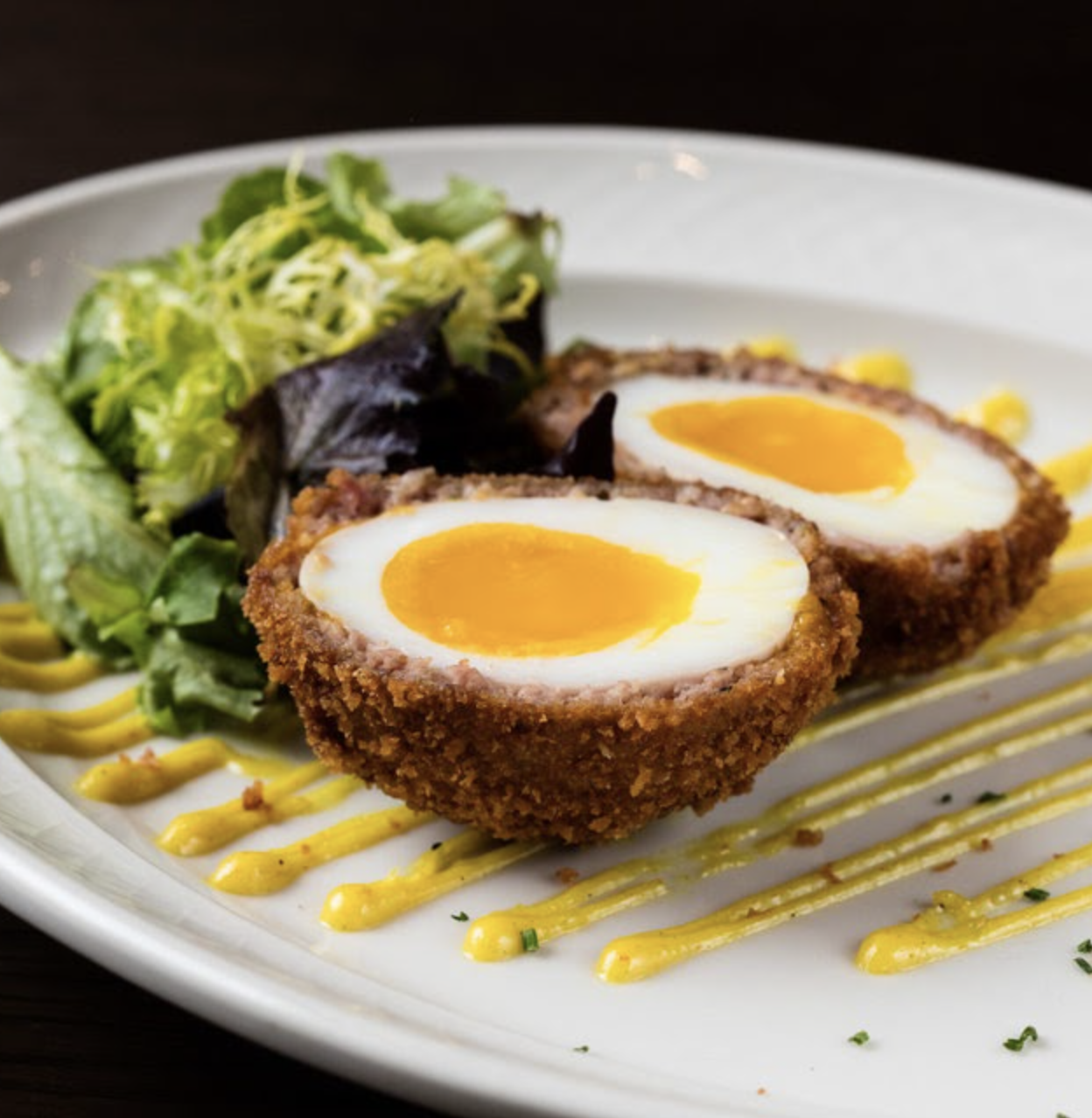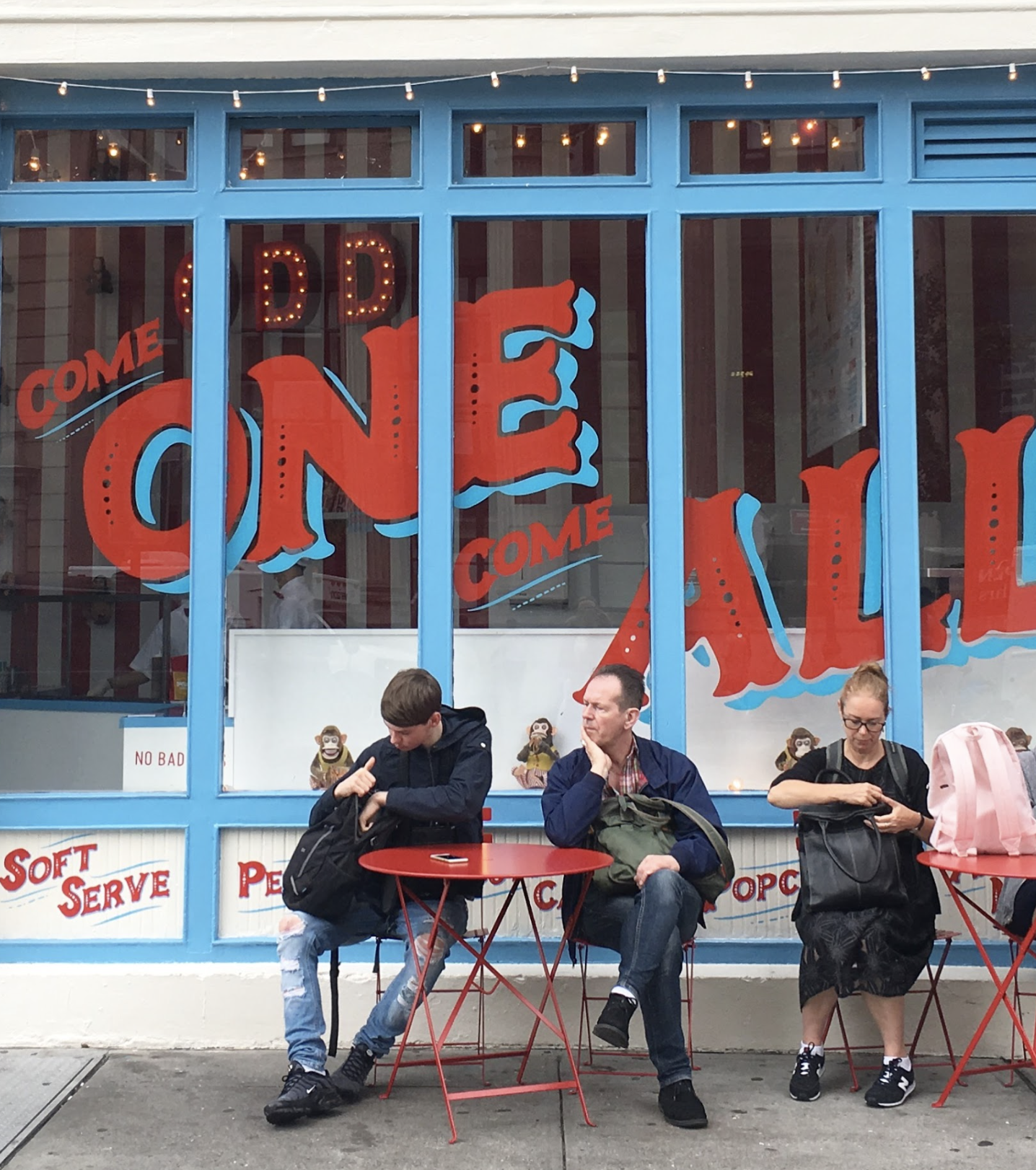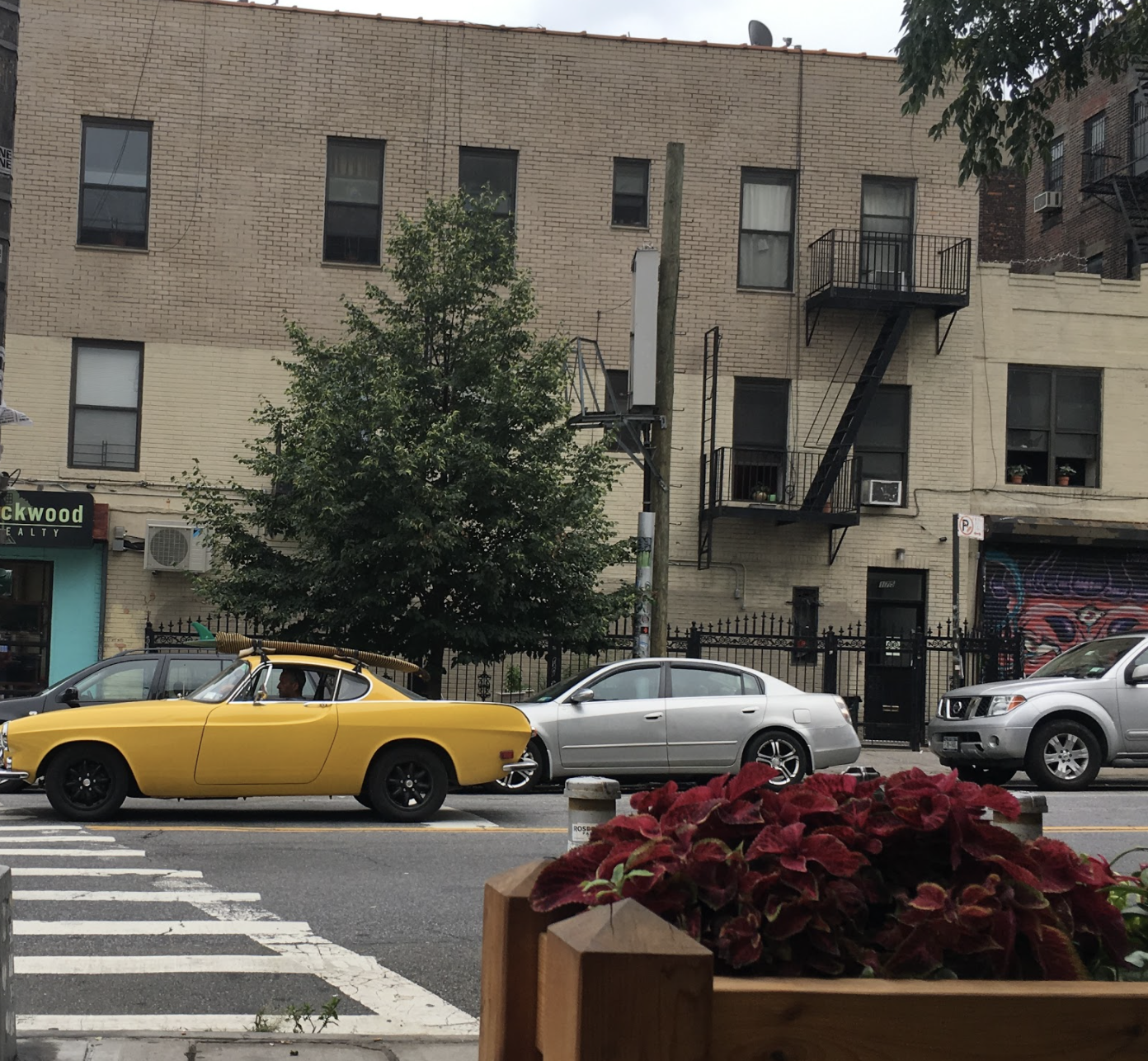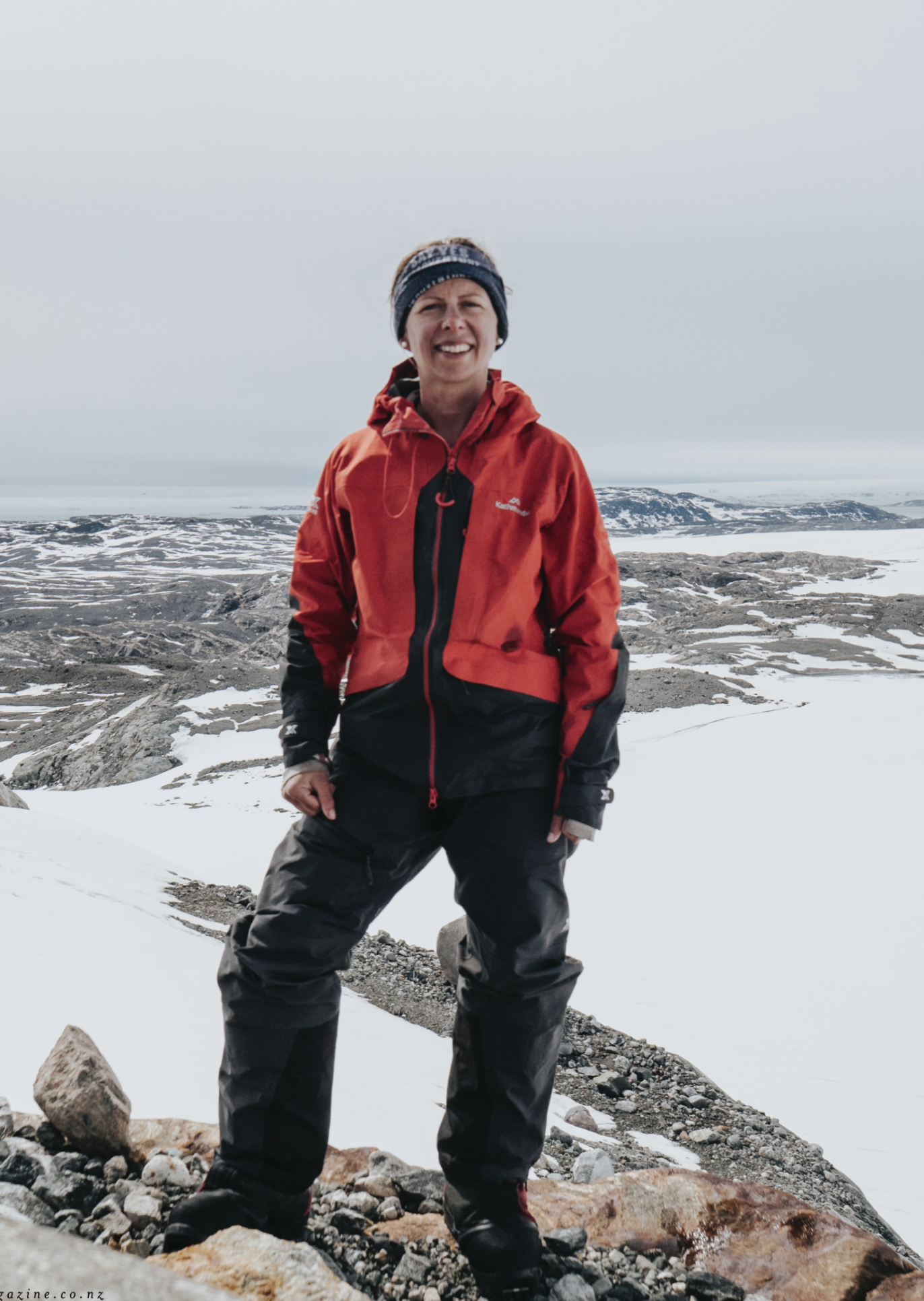It’s all downhill
There are more than 25 ski fields in this lovely little country of ours, and whether you’re into gently gliding across groomed pistes or consider yourselves the heli-skiing types, we’re here to help you meet your match.
There are more than 25 ski fields in this lovely little country of ours, and whether you’re into gently gliding across groomed pistes or consider yourselves the heli skiing types, we’re here to help you meet your match.
Best for children
Whakapapa: The rising sun strikes early at New Zealand’s largest ski field on the northern side of Mt Ruapehu, softening the slopes, and snow machines ensure a long season here. Whakapapa has thrills and spills for old hands, while Happy Valley is tailor-made for beginners and has its own ski school. You’ll also find all the sustenance and hot chocolate you need at one of the many cafés; Knoll Ridge is the highest in the country.
Skill level: Learner to experienced.
Location: Three hours from Tauranga.
Open: June to October.
Cost: Adults from $73/day.
What’s cool: Happy Valley’s see-through covered lift tunnels.
Best for powder
TūROA: The top of Tūroa is a serious powder playground – even your boss will understand why you need to take a day off to make the first tracks. On the south-western side of Mt Ruapehu, Tūroa has a totally different feel to Whakapapa, with exposed volcanic terrain, wide trails and huge basins. It boasts the longest vertical drop in New Zealand and has the most extensive terrain parks in the North Island.
Skill level: Learner to experienced.
Location: Just under four hours from Tauranga.
Open: June to September.
Cost: Adults from $73/day.
What’s cool: The High Noon Express chairlift that takes you to 2322ft.
Best for going off-piste
CRAIGIEBURN: A club that attracts hardcore skiers and powderhounds, Craigieburn is located in the Southern Alps. Described as ‘cheap, steep and deep’, you won’t find groomed runs here – it’s just one massive off-piste area. If that doesn’t worry you, you’re probably the perfect fit.
Skill level: Intermediate to advanced.
Location: Just under two hours from Christchurch.
Open: July to August.
Cost: Adults $75/day.
What’s cool: A vertical descent that’s been compared to heliskiing – without the helicopter.
CRAIGIEBURN.CO.NZ
Best for all-day sun
MOUNT DOBSON: Usually crowd-free and with great ski schools, Mt Dobson is high up, so the snow is pretty dry, but you’ll also enjoy some lovely sun warming your back. Situated on the main road between Queenstown and Christchurch, it’s close to accommodation and other activities at nearby Tekapo. The chairlift is the centrepiece of the lift system, and there’s a natural halfpipe underneath.
Skill level: Learner to advanced.
Location: Two-and-a-half hours from Christchurch.
Open: July to August.
Cost: Adults from $84/day.
What’s cool: The epic view of Mount Cook.
Best for experts
CORONET PEAK: Coronet Peak is a world-class ski and snowboard spot, featuring state-of-the-art facilities, 280ha of skiable terrain and breath-taking views. It also has the country’s largest fully automated snow-making system, with 217 snow guns, which combined with Mother Nature results in a long season of consistently good skiing and snowboarding.
Skill level: Learner to experienced.
Location: Twenty minutes from Queenstown.
Open: June to September.
Cost: Adults from $119/day.
What’s cool: Night skiing on Wednesdays, Fridays and Saturdays.
Best all-rounder
CARDRONA: Like the sound of New Zealand’s biggest halfpipe? Beginner and intermediate skiers love this easy-going ski field for its wide open spaces – plus it’s often less crowded than some other local spots. With five eateries on the mountain and some of the driest snow around, this ski field really does offer something for everyone – and the drive home over the Crown Range is spectacular too.
Skill level: Learner to intermediate.
Location: Thirty minutes from Wanaka.
Open: June to October.
Cost: Adults from $65/day.
What’s cool: Stopping for a well-earned Speight’s at the Cardrona Hotel.
Hot Hawke’s Bay
Heat, wine and art deco parties. Welcome to Hawke's Bay.
WORDS KSENIIA SPODYNEIKO PHOTOS ALEX SPODYNEIKO
Heat, wine and art deco parties. Welcome to Hawke's Bay
WINE AND DINE
World-famous wineries are obviously a big drawcard. You can cycle your way round the wineries (bikeabouttours.co.nz) which could end up being challenging if you over-indulge on the way round! If you're tempted to indulge, the cosy boutique Wineries Ride through. But if tipsy bike balancing is not the way you imagined your perfect vacation, focus on the “three whales” of local vineyards to skim the cream off the best Hawke’s Bay has to offer.
Mission Estate is definitely the first check point for any tourist. The oldest winery in New Zealand is located 20 minutes away from Napier – quite hard not to call on the way to the other sights. Outdoor lunches are adorable here! Pretty much the way you would imagine them to be in the year 1851, when the winery was established. Elegant architecture, muted talks, inspiring views and fantastic food. Leaving this place without giving local cheeses platter a try is a crime. Creamy blue “Kapiti Kikorangi” itself is worth $32, but this price also includes two more sorts and a bunch of fruits, jams and crackers.
The other must-sees are Craggy Range (voted Best New World Winery) and Elephant Hill. Two “sisters” where built by the same architect and share the same standards of producing the best wine ever. Though skipping any of these would be a mistake. Surrounded by the epic mountains Craggy Range celebrates all things French – from cuisine to the architecture and landscapes. Whereas family-owned Elephant Hill belongs to Germans – determined and precise people focused on high technologies and outstanding presentation. Just ask for their iconic Airavata Syrah degustation ($120 per bottle while the degustation is only $5) and be ready to watch the show.
WHAT TO SEE
To feel the vibes of the festive Hawke’s Bay start with exploring its gem – Napier. The best way to discover this city is obviously by vintage car. Because where else if not in the world’s Art Deco capital? Either rent a lovely Hooters’ open top next to the Masonic Hotel or book one of the perfectly polished Art Deco Trust cars around the corner. Tere Morales-Probert from the latest is the guide to die for. 45 minutes in one car with her and you are ready to move here immediately – impossible to resist her jokes, positive attitude and touching love to Napier.
After the tour around the city and aesthetically beautiful lunch at Mission Estate head towards Havelock North – quiet small town right next to the picturesque Te Mata Peak. But no more city life for today! Time for some tough outdoor calories burning. Leave the car by the main entrance – only you, your big water bottle and spectacular surroundings are ahead. The 5 km hiking trail across Te Mata is challenging, but definitely worth the sweat. Just imagine yourself balancing on a narrow path at the very top of the mountain chain – scorched by the sun valleys on both sides, wind in your hair and Giant Redwoods at your feet. Welcome to the Real Middle Earth! The only thing ruining the euphoria of conquering the top is a steady roadway right to the peak. Honestly, how dare all those people distract you from this workout by passing by in their air conditioned 4x4?
But nothing on Earth can ever compare with an adventure of getting to the famous Cape Kidnappers on a 1949 tractor! Sure, you’ve heard the story about the Tahitian boy, kidnapped by local Maori from the Captain Cook’s ship. Yes, that is that place! No one kidnaps people here anymore, on the contrary, they come willingly to see the world’s largest accessible Gannet Colony. There are several ways to get to the beautiful birds, starting from the 9 km walk along the beach – definitely not the most pleasant option! Mind the way back as well. Whereas comfy and fun trip with Gannet Beach Adventures is. Those guys use huge vintage tractors to bring people right to the bottom of Cape Kidnappers. As if the trip on the machines like that wasn’t epic enough itself, tractors are driven into the ocean or up the massive stones to make adrenaline rush through your veins. Guides tell interesting stories about this unique place and make jokes after jokes. Though the one about four million dollars made by one of the guides looked not quite as a joke! And he is divorced by the way. Just saying…
WHERE TO STAY
Hawke’s Bay is all about atmosphere and the Art Deco Masonic Hotel in Napier is 100% the perfect place to dive into it from the very first second. Located in one of the rare buildings not ruined by the 1931 earthquake, this hotel is insane.
Just imagine, they still keep the secret underground bar, operated during the years when alcohol was prohibited! Bar counter, graffiti, chairs – everything is left as if it was abandoned only yesterday. Though, guests are not allowed to come down these days.
Many other things are preserved here right as they were made a century ago: massive staircases, tiny doors (how slim and short people used to be!), old-fashioned chandeliers and mirrors. So you literally live in history.
The most exciting part about this hotel? Not a single room is like another! Makes every of your 46 trips to Hawke’s Bay pretty special, huh? That is exactly how many rooms they have.
Masonic Hotel can easily be called the city’s centre of gravity – no matter if you’re in search for the Six Sisters houses, returning from the jazz concert, or just feel like buying a scoop of real fruit ice cream from the nearest shop – you will always end up nearby the hotel. Isn’t it just convenient?
UNO Staycation: Rotorua
We wanted a weekend away with our children; an antidote to screen time: adventure, laughing, and fun. And we didn’t want to spend ages travelling. So we took a staycation in Rotorua!
We wanted a weekend away with our children; an antidote to screen time: adventure, laughing, and fun. And we didn’t want to spend ages travelling. So we took a staycation in Rotorua! The money we saved on travel (just an hour down the road) and accommodation (we didn't need any, we slept at home!), we spent on experiences. It was a decision well made.
There must be something in that Vegas air, everyone working in this booming tourist industry was friendly and knowledgeable, and they all genuinely love their jobs.
We were a fairly big group: Mat, his mum (love you, Susie!) and I, our five children and a young nephew. The children ranged from four up to 13, so adrenaline was the order of the day. And that's what we got!
Saturday am: Up the Skyline Gondola and down the luge. I'm a wimp so doubled up with my daughter and took the slower of the three routes down through the trees.
Saturday lunch: A hearty lunch at the iconic Pig & Whistle refuelled the whole team, ready to go again.
Saturday pm: Agroventures is home to six adrenaline-fuelled rides. Our big children found soaking the youngsters on the Agrojet he most amusing activity!
We drove back home to The Mount, had a huge dinner and fell asleep almost immediately. Up early on Sunday morning and a short drive back to the Rotorua thanks to that brilliant toll road round Te Puke.
Sunday am: This was my favourite: sloshing around in warm water inside an inflatable rolling ball at OGO. Our stomach muscles ached from giggling.
Sunday afternoon: After all that action, the Polynesian Spa was a great choice. We loved the new Priest Spring acidic mineral hot pool overlooking the steamy lake.
A debrief and afternoon tea at the country's café of the year, Capers, rounded off our weekend just perfectly.
#UNOLovesRotorua
The itinerary:
Saturday
Morning: Up the Skyline gondola and down the luge
Lunch: Pig & Whistle
Afternoon: Agroventures
Sunday
Morning: OGO
Lunch: I took a picnic
Afternoon: Polynesian Spa, followed by afternoon tea at Capers
My heart lies in Fiji: Nicky Adams shares her favourite stays
While there are many beautiful island destinations in this world, they don’t all come complete with a welcome that feels absolutely genuine, a national pride which shines out, and the locals’ desire to share their blessings with you, a passing traveller.
WORDS NICKY ADAMS IMAGE SUPPLIED
International jet-setting explorer and, in another life, Condé Nast Traveller writer, Nicky Adams, has a whole new perspective on travel, given her permanent luggage of three small children.
My heart lies in Fiji - always has, always will. While there are many beautiful island destinations in this world, they don’t all come complete with a welcome that feels absolutely genuine, a national pride which shines out, and the locals’ desire to share their blessings with you, a passing traveller. And this doesn’t just apply to the resorts; venture out to central Fiji and there is not only magnificent countryside, but also new depths of hospitality. As for the outer islands, the beauty of these is nothing short of jaw dropping. However, while there was once a time I loved to explore, I now have three young children, and I can’t think of anything more horrific than discovering new horizons with them in tow. Oh no; I want streamlined travel, I want ease and I want cocktails, and lots of them.
Which leads me straight to Denarau, a wee pocket of joy along the Fiji’s west coast. Granted, the beach does not have the wow factor or the snorkeling opportunities found at the outer islands, however a day trip to these is a breeze to arrange. And what Denarau offers in abundance is convenience and variety: resorts, restaurants and activities. So whether you are zipping over for a short stay or combining a stopover with an island retreat, ease is the name of the game. Whip through the airport (currently being upgraded) and after a 20 minute cab ride, voila! Check in, throw down your bags, strip off your winter warmers and melt into a ringside seat at the oceanfront bar. Perfect.
Here are some of the resorts who get that job done.
Radisson Blu Resort Fiji Denarau
Rated the Number One Family Resort in Fiji in the 2016 and 2017 TripAdvisor Travellers’ Choice Awards, this is a spectacular location. Families flock here, loving the extensive grounds, selection of three kids’ pools, and of course the particularly cool (usually supervised) water slide. The lush tropical landscaping makes you feel as if you really are in Fiji as opposed to just a five-star-resort anywhere in the world, and this tropicana also helps dull down the noise of all the wee ones, so those dozing by the adults-only pool remain undisturbed. The Radisson in my opinion has a number of big draw cards – firstly it’s the only resort to boast climate-controlled pools. There is also good shade-sail coverage over the pools, which is unique to this resort, and finally there is the offer of some complimentary water sport activities. The Blu Banana Kids Club is comprehensive, but I was more impressed by the daily activities, so that if you don’t want to use the club, there is still plenty to do. The rooms are spacious and well appointed, however next October a big overhaul will start its first phase, which will take the rooms to a whole new realm. Incidentally, despite offering six fabulous restaurant choices (check out Signature Blu for fine dining) the one-bedroom suite comes with full kitchen facilities – and, gasps from those who enjoy home comforts, a washing machine and dryer. For families of five, if the youngest is an infant, you can fit into the suite, but you’ll need to contact the resort directly.
radissonblu.com/resort-fiji
Sheraton Fiji Resort
This resort is an integrated complex, which allows you access to both the facilities of the Sheraton and the Sheraton Villas, and the shared foyer will frankly knock your socks off. As you walk through the open entrance and look across an infinity pool to the ocean beyond, it’s hard to hold back tears of joy! Aimed at families, the villas comfortably house larger groups. While the exterior of the complex feels a little dated, there were details that make all the difference to a stay. The suites are spacious, towels were found to be soft and fluffy, the plunger coffee plentiful, and the kids’ pool ideal for young ones, and crucially, nice and close to the accommodation. Unlike the Radisson, where getting a hot spot around the pool can be cutthroat at times, here it’s a less aggressive activity. Another bonus is that guests are able to use the facilities at sister resort The Westin, which has, amongst other things, a brilliant outside play area for young kids. It’s a sad day when you admit to getting excited about a playground, but when the kids have had too much sun, this shaded area is enough to make me want to whoop with joy. Never mind the exceptional spa facilities and the access to the Denarau Golf and Racquet Club, just give me a decent swing and my heart sings.
sheratondenarauvillas.com
Sofitel Fiji Resort & Spa
The Sofitel has an easy-breezy feel about it and the vibe is super family friendly, with little touches like an outdoor movie area close enough to the rooms for older kids to hang out unsupervised. It offers some really enticing deals for Accor members; amongst them, discounts of up to 50 percent on meals from the restaurant, and the day I visited, FJ$45 for unlimited soft drinks all day (plus alcoholic cocktails at certain times – yum). I do feel that this resort is a little tired and less up to the minute than others, however, to compensate for that the Sofitel has pulled something quite spectacular out of the bag in the form of The Waitui Beach Club. This is taking the idea of ‘adults only’ very seriously, even boasting its own check-in area. To ensure tranquility both the ‘Club’ and the rooms included in the Waitui Club, are located away from the family rooms. Oozing luxury, a peaceful vibe pervades. All the trimmings can be found: white daybeds, a glass walled gym overlooking the ocean that offers, amongst other things, yoga classes to help unwind further. If that’s not enough, beautiful people with beautiful silver trays of canapés waft around periodically throughout the day. To top it off, there’s an hour of complimentary evening cocktails. And not a child in sight.
sofitel.com/Fiji_Denarau
NICKY’S TOP TIPS
Check out the Tuckers ice-cream corner just outside the front of the Sheraton, delicious and a third of the price of the New Zealand Natural cones in the resorts.
There is a medical centre on Denarau, and I can vouch for the fact that the service is quick and efficient.
For à la carte I would recommend Signature Blu at the Radisson. Watch out for exclusive restaurants that are ‘cashless’ and menus that don’t include tax (on the list price) or vegetables, or you could, like us, find yourself paying over FJ$100 for a slab of steak alone.
You can take some food types into Fiji, so if you like fresh milk, freeze it and take it as the resorts seem to only sell UHT. Other items to take are gourmet crackers, cheese and chocolate, all of which tend to be highly priced.
Take a taxi to the port early in your trip and stock up on beer and supplies from the supermarket there.
Flexibility with travel dates can result in competitive room rates. Also bear in mind that by using an agent you may be able to work out a room configuration that you cannot do online.
Aston Martin DBX: supreme luxury on all terrains
Aston Martin Lagonda’s first SUV, DBX, has been awarded the ‘Best Designed Car of the Year’ at The Sunday Times Motor Awards.
With the kind of exhilarating power and control necessary for navigating New Zealand’s unique and challenging terrain, the Aston Martin DBX brings with it a luxury that could comfortably take you from one end of the country to the other.
The first ever SUV from Aston Martin, it’s also a rare example of getting it right first time - scooping ‘Best Designed Car of the Year’ from The Sunday Times and ‘Best Luxury SUV’ from the GQ Car Awards.
4 October, 2020; London UK: Aston Martin Lagonda’s first SUV, DBX, has been awarded the ‘Best Designed Car of the Year’ at The Sunday Times Motor Awards. While the shortlist is drawn up by judges at News UK, the winners are chosen by readers votes.
Will Dron, Editor of Driving.co.uk at The Sunday Times said, “A brand traditionally associated with sports cars had a tough job on its hands creating its first SUV, but the fact that Sunday Times readers voted the DBX their favourite design of the year — against some truly stunning competition — is a clear indication that Aston Martin got it right first time.”
The Aston Martin DBX was first revealed in November last year and sees the British brand compete in a new segment of the global luxury market for the first time. Built on a new dedicated platform in a purpose-built manufacturing facility in St Athan in Wales, DBX remains distinctly an Aston Martin through both its engineering and design: From the signature grille at the front, through the sculptured sides and design feature line, to the tailgate flip that draws inspiration from the brands most focused sports car, Vantage.
Marek Reichman, Aston Martin Lagonda EVP and Chief Creative Officer says, “We are delighted that Aston Martin DBX has been awarded by readers of The Sunday Times for its design. We designed DBX as we would a sports car, but its unique platform gave us the freedom to create an SUV with stunning performance and design, and to be awarded Best Designed Car of the Year makes us very proud of what we have achieved ”.
Chief of Vehicle Attribute Engineering Matt Becker says the DBX offers supreme confidence, whatever the terrain.
“Our performance has seen us push the boundaries of what is possible for an SUV.”
DBX is an SUV with a V8 engine that offers an exhilarating 550PS power output, backed by 700Nm of torque. That power is delivered over the widest possible range, focused on providing instant throttle response.
The DBX has active all-wheel drive with variable torque distribution and height-adjustable air suspension, which combine to give you the confidence and versatility you need for life’s great adventures. Thanks to lightweight aluminum construction, and its world-leading powertrain and suspension developed by the finest engineers of their kind, DBX drives like no other SUV - it drives like a sports car.
Path of progress: Motu Trails, Opotiki
How a decade-old cycle trail is delighting both tourists and the local community contributing to its success.
How a decade-old cycle trail is delighting both tourists and the local community contributing to its success.
WORDS Sue Hoffart PHOTOS Jim Robinson, Neil Robert Hutton + Cam Mackenzie
A scenic dunes trail that has resolved a watery paradox for the coastal town of Opōtiki is proving a massive drawcard for both locals and tourists.
Ancient waka travellers and modern-day boat owners have always been able to access the ocean by way of twin rivers that wrap around the Eastern Bay of Plenty township. But it took a cycle trail and handsome suspension bridge spanning Otara River to connect walkers, joggers and bikers with the gloriously long stretch of coastline on their doorstep.
Most of the spectacular Motu Trails cycleway network lies inland, where rugged grade three and four tracks attract hardy mountain bikers keen to test themselves on backcountry roads and steep forest trails. Collectively, they range over 30km of track and more than 150km of gravel and backcountry roads. The most mellow section, though, begins with a pedestrian bridge on the northern edge of town and a delightfully scenic, undulating gravel track running parallel to the shoreline.
Increasing popularity
It is this 9km grade two “dunes trail” that has given the town its beach, according to tourism operator and local resident Volker Grindel. The decade-old trail has become increasingly popular with Opotiki people and visitors.
“Before, everyone needed a car to get to the beach,” Volker says.
These days local children and carless residents can reach the coast safely on foot, by crossing the Pakowhai ki Otutaopuku bridge, rather than having to walk more than 3km along the highway and side road. So too can tourists who arrive by bus or bike. After crossing the river, the trail meanders past grazing Friesian cows and opens onto views of the East Cape and nearby Moutohorā (Whale Island).
“The dunes section is the most used part of the Motu Trails,” Volker says.
“The town kids and people who live here use it a lot for fitness; running, jogging. And the kids who live out of town use it to come to school on their bikes because it’s safer than the highway. I’ve even seen a little fella with training wheels.”
Happy accident
Volker and his wife Andrea operate a small backpackers’ hostel and Andrea runs their busy Kafe Friends coffee cart just off the main street. The German-born couple, who met in Opotiki after her car broke down there, are seeing increasing numbers of day trippers in bike gear from nearby Rotorua, Whakatane and Tauranga.
He says Tirohanga Beach Motor Camp, part way along the dunes, is packed with people using bikes during summer holidays and weekends. Plenty of those campers and cycle tourists make their way along the trail to the town centre.
“Before, they were not taking their kids on that busy road. Now, they come here to town do some shopping, drop in for coffee here or somewhere else. So the Four Square, the New World, the gas stations all get something out of this trail, too.”
Andrea runs along the dunes when she is training for half-marathons, and it is used by dog walkers and local schools that have been inspired to run duathlons and small cycle events for students.
Long-time volunteer trail builder, keen biker and Motu Trails executive officer Jim Robinson does track assessments, as well as overseeing signage, the trails website and Facebook page and multiple other roles. He laughs at his fancy title and stresses the trust-run operation is small and heavily reliant on unpaid community involvement, as well as council and conservation department input. But he says there is no doubting the Motu social and economic benefits, or its standing as a ‘great ride’ of Ngā Haerenga, the New Zealand Cycle Trail.
He is especially enthused by the ongoing planting and beautification programme that has transformed the “really important but environmentally degraded” sand dunes area with the help of about 20,000 flax bushes, cabbage trees, pōhutukawa and other native plants. All have been poked into the ground by volunteers, with another three planting days planned this winter.
Jim says one section of coastline now occupied by the dunes trail had been used for dumping rubbish, other parts had been grazed by stock, or were covered in gorse, kikuyu, boxthorn, pampas and other undesirable invaders.
Points of interest
Interpretive signs denote culturally significant areas, including historic landing sites and burial grounds, and the track route was chosen to avoid especially sacred or sensitive sites.
Local potters and environmentalists Margaret and Stuart Slade provided handmade ceramic tiles depicting birds, mounted on concrete culverts to create sturdy sculpture. Earlier artworks were provided by schoolchildren who painted wooden cut-outs of birds and animals as a conservation week project.
Small tourism operators have sprung up to offer farmstay accommodation, food or shuttle transport to mountain bikers using the trails that connect Opotiki to Gisborne.
Late last year, long-time kayak tour operator Kenny McCracken began offering guided bike tours along the dunes, incorporating local history and food, with an optional swim along the way.
“There’s a massive amount of community ownership of the trail,” Jim says.
A long weekend in Los Angeles: our editor shows you how
A sunny stroll through the canals which are a great surprise to find in such a sprawling city, and we picked up our bags from the hotel and headed back out to the airport for our 9pm flight. An entirely different continent and three days of discovery, then back feeling refreshed. The best way to holiday.
WORDS + PHOTOS Jenny Rudd
So you probably think it's not possible, what with that 12 hour flight. But it all dovetails neatly. The flights are overnight both directions, and there's only a 3 hour time difference, which you barely notice. Leave Auckland Friday night and land mid-morning on the same day. Then leave LA on Sunday night and land back home first thing on Tuesday. Because you've slept all night on the plane you'll be fresh enough to go to work that day. So you can go on holiday to America and only take Monday off work. What a great shimmy!
Friday
If we're only going for the weekend, we're staying in Venice Beach with the action. We dumped our stuff and got straight outside. Using your Uber app, you can pick up ebikes to cruise along the boulevard. It's a slow ride because there's so much take in and see. Although Venice is famous for Muscle Beach and oiled bronze bodies, there's also a hippy, anything-goes vibe which you notice straight away, cycling through fragrant puffs of weed smoke; marijuana's legal in California.
The bike path ran for miles. Eventually the bright colours and pleasant oddball residents faded to the sleeker Santa Monica. The farmer's market was in full swing so we gulped down bright and sweet blood orange juice and turned round to head back.
We were amazed by the number of people using all the public facilities; there were lots of basketball matches going on with spectators joining in and dropping out, the skatepark was a blur of tie dye and wheels on concrete. A huge, empty car park had been repurposed as an ice hockey pitch.
After a full day of biking and sightseeing, we were pretty happy to grab takeaway caprese salads from the deli next door to the hotel and eat them in bed, flicking through the millions of TV channels.
Saturday
If a tour guide is as enthusiastic and knowledgeable as Daniel, you know you're going to have a good time. An online search had showed us that ALL Day LA Tours would teach us about the history of the city and give us ideas of things to do. We started in Hollywood at the Walk of Fame, then up to the Hollywood sign which used to be a real estate sign for the land underneath in Franklin Village, a peaceful graveyard housing some of the greats: Marylin Monroe, Hugh Hefner, and my favourite - Peter Faulk of Columbo fame.
Daniel took us through the grounds of Greystone Mansion, a huge estate in Beverly Hills with landscaped grounds built in the twenties by oil tycoon Edward L. Doheny for his son, Ned. It's since been gifted to the city. What a story; Ned killed himself and his secretary in one of the spare rooms. The two men had been involved in an oil scandal with Ned's father.
The whole tour was story after story like this and we whizzed around in a comfy people mover with no windows for maximum photo opportunities. We finished off driving down Rodeo Drive and all of us goggling at the outrageous displays of wealth.
Saturday night in Venice Beach was lively, we decided to go for sushi just off the main drag which was a great choice after all the chips and cookies we'd packed away during the day. The interior was sparse and urban and the sashimi was excellent.
Sunday
We had a late start over the continental breakfast included at the hotel, then walked to the achingly cool Abbot Kinney Boulevard. There are murals of the sides of buildings everywhere, and the artiness of the locals really shows. We heard stories that it's been gentrified and that had changed quite a bit over the years. But we loved it. The thought and design that had gone into every space whether it's a clothes shop or restaurant gives you so much to stop and look at.
Lunch was a huge pile of salad from Greenleaf which described themselves as a gourmet chop shop.
A sunny stroll through the canals which are a great surprise to find in such a sprawling city, and we picked up our bags from the hotel and headed back out to the airport for our 9pm flight.
An entirely different continent and three days of discovery, then back feeling refreshed. The best way to holiday.
Stay:
Inn at Venice Beach
Retro rooms with huge images everywhere of Venice Beach over the years. It felt retro and fun with pops of orange on white bedspreads. The location was fantastic: 20 minutes from the airport, right near the action, clean and quiet.
Eat:
Sushi Enya
Chef Kimiyasu Enya trained for 10 years before setting up his three restaurants in Los Angeles. The interior was industrial and all focus is on the clean bites of sashimi.
Move:
Don't even think about renting a car. We used Uber and the scooters and bikes which were everywhere, and easily unlocked with our Uber app.
Hamilton through the Insta-lens: the most snappable spots in the city
Modern-day travels are not only about new places, people or flavours anymore. Perfect Instagram pictures are playing the leading role. Not a problem in Hamilton – probably the most Insta-suitable city in the area.
Modern-day travels are not only about new places, people or flavours anymore. Perfect Instagram pictures are playing the leading role. Not a problem in Hamilton – probably the most Insta-suitable city in the area.
WORDS Kseniia Spodyneiko PHOTOS Alex Spodyneiko
#TeaWithAView
To start this one-day photo-hunt in the Waikato region, we drove extra 10 km from Hamilton – directly to the hidden in between the fields and farms aristocratic Zealong Tea Estate. From the spacious black-and-white shop to the traditional high tea ceremony - this place is all about sophistication.
Even its story is extraordinary: 11 years ago local tea lover Vincent went to Asia and selected 1,500 cuttings to start tea growing in New Zealand. Little did he know about the upcoming challenges! After the long quarantine only 130 plants survived! Those were the strongest and the best ones. The ones that quickly turned Vincent’s small garden into a 1 million sprouts organic plantation.
And by “organic” they mean certified world’s highest food safety standards. Literally, they are not even allowed to spray the grass. At Zealong they hire people to get rid of bags manually instead! And I thought having a personal Whittaker’s flavour “Waikato Grown Oolong Tea in Dark Chocolate” was already cool enough…
We were lucky to be guided around by the amazing Annalese Webber. Currently the administrator, she started her career as a waitress in Zealong café, where she still makes traditional tea ceremonies for guests. And that is a must! Followed by a high tea on the terrace with an epic view over the plantation, this process is simply hypnotizing.
Talking about the views – grab the cutest cupcake from a traditional British three-tiered tea plate and proceed to the small lookout nearby. Strike a pose and be ready to wake up famous.
#NeverStopExploring
Hamilton Gardens are yet another place not to be missed. After all, what else if not all those colourful flowers are the reason for the nowadays photo hysteria?
The famous local sight is a tricky labyrinth of traditional for different countries and centuries gardens. Dive into the Italian Renaissance for the impressive geometry and symmetry. Japanese corner surprises with its picturesque pond. Sustainable Backyard brings in a touch of coziness and childhood memories. And the authenticity of the Indian Char Bagh can confuse even the most experienced travellers (the best perspective is at the corner to the left from the entrance).
In the second half of the exciting walk you will bump into the Tudor Garden that truly steals the show! Epic stone tower, beasts’ sculptures, recognisable green and white stripes (thank you Jonathan Rhys Meyers for turning us into the Tudor experts) – perfect spot! Stay on the balcony to capture the fantasy atmosphere of this place in its best angles.
#Foodporn
When it comes to food, nothing can go wrong in Hamilton. This city is famous for vibrant interesting restaurants. Overlooking the beautiful Waikato River is the popular Gothenburg with its fancy tapas menu. Crispi potato gnocchi with blue cheese, walnuts and pear are a win-win: delicious and beautifully plated. By the way, this place is known for the best view over the river. You got the idea.
For a less pretentious lunch head to Mexico or Iguana. Located right across each other on Victoria Street, they can turn the decision-making into a nightmare. Softshell tacos with achiote plancha pork belly in apple chutney or a seasonal pizza with coffee-rubbed venison and smoked mozzarella on a plum sauce base? Both, please.
No matter what your choice is, make sure you leave room for dessert. Duck Island Ice Cream (300a Grey Street) is organic, made in-store and is literally the best ice-cream ever! Will trade my left hand for an extra scoop of that Maple, Honeycomb and Smoked Almond calorie bomb. And they have 17 more outstanding flavours. Rhubarb Szechuan Peppercorn, anyone?
Iguana Restaurant
#SkyIsTheLimit
The rest of the day we spent admiring Zuru Nightglow. Annual hot air balloons show is the part of the weekly Balloons over Waikato festival. This event is huge – Zuru Nightglow alone is said to be visited by 80 000 people!
At 8 pm enormous balloons in shapes of hugging birds, cartoon helicopters and rockets start to, well, glow following the rhythm of the popular hits. Culmination comes with the fireworks. As beautiful as hard to capture! You simply can’t beat thousands of people photobombing your pics.
But there is always a second chance for someone fascinated by the hot air balloons in Hamilton. During the summer season they fly over the city every morning.
#RealLife
(Things to do in Hamilton for those not addicted to Instagram):
Te Aroha Mineral Spa
Fed by the world’s only hot soda geyser, this spa offers private wooden tubs and relaxing beauty treatments by Mount Te Aroha.
The Base
The largest shopping centre in New Zealand is definitely worth a visit. Loved by beauty moguls for The Body Shop, Lush and L’Occitane all in one place.
Waikato Museum
Dinosaurs, Tourism posters, Milk production – Waikato Museum exhibitions are anything but boring.
A whole new world: you’re never too old for Disneyland
Given it’s known as ‘The Happiest Place On Earth’, it’s hard to keep expectations in check ahead of a trip to California’s Disneyland. After all, this is it, the childhood land of milk and honey – one huge expanse of delirious delightfulness.
WORDS NICKY ADAMS PHOTOS SUPPLIED
Don’t try to resist Disneyland’s pastel allure – this magical alternate universe really is fun for all ages.
Given it’s known as ‘The Happiest Place On Earth’, it’s hard to keep expectations in check ahead of a trip to California’s Disneyland. After all, this is it, the childhood land of milk and honey – one huge expanse of delirious delightfulness. It’s like a parallel universe has been created, filled with flowers, colour, magic and rides – so many rides. There are marshmallow dreams coming at you from every direction from the minute you step through the gates, and even the most sceptical of sceptics wouldn’t be able to resist the joy.
Now, to start with full disclosure, historically I’ve never loved theme parks, purely because an adrenaline junkie I am not. Big Dipper? A big not likely, so I certainly wasn’t visiting Disneyland for the rush. It had been a family dream to make the trip, and with three children between four and 10, the question was when, not if, it was best to take the plunge. In reality, absolutely any age works. As I watched my husband Scott shove the children aside so he could jump onto the first carriage of the It’s A Small World ride, I realised with certainty that you’re never too old for Disneyland.
The city of Anaheim is home to Disneyland Park and Disney California Adventure Park, which sit amid a district known as Downtown Disney. Much of the surrounding area is taken up with hotels of various degrees of swankiness, which service the parks. Downtown Disney is where the magic begins; a pedestrianised paved area, this hub is brimming with eateries and retailers. Among the flower gardens and benches, you’ll often see street performers – and we’re not talking a few juggling balls. Calibre-wise, we’re one notch off Broadway.
Despite the fact that the minute we arrived, our children were gagging to get to the parks, we opted to have a ‘rest day’ to chill out by the pool. Trust me, you need to be firing on all cylinders once you’re within the hallowed walls. There are a number of different options for passes; whichever you choose, strategy is imperative. I’m not organised by nature, but this is one time when military-style planning is not OTT. The Disneyland website is well worth spending time on, and a Disneyland app that provides wait times is potentially a lifesaver. Multiple entry on your pass allows you to come in and out as the kids become tired, and for us also meant our older kids – and Scott – could return at night and do all the more hardcore rides. Another bonus was being able to leave the parks to eat in the Downtown area.
We found the food pretty ho-hum inside the parks, so we packed plenty of snacks and water, and tried to last as long as we could. We picked Disneyland for our first day (not all tickets allow you to go between parks). It’s not a wild exaggeration to say that as soon as you’re inside, the euphoria takes hold. Everywhere you look, there are Disney characters; princesses, villains, heroes – all larger than life, friendlier and just as appealing as newborn pups. Although the temptation is to throw yourself on them, there is a protocol, with the kids quickly forming a line to get a handshake and autograph from each character. When it comes to the rides, some visitors plan their route around their preferences, some meander, and some are guided by the FastPass – a fantastic way to jump the queues. However, this isn’t available on all the attractions, so find out in advance if it works for the activities you want to do.
We largely ambled around picking the rides the kids fancied and didn’t seem to have lines that were too long. Of course, realistically, queueing is unavoidable; a bit like petrol prices, you just have to suck it up, and when the surroundings are so totally awesome, it seems churlish to moan about a queue.
So how did I fare on the ride front? Actually, pretty well. I gritted my teeth and went on the big Pixar Pal-A-Round wheel; with a grin fixed on my face, eyes squeezed shut behind my sunnies, I gripped with white knuckles to the side. I accidentally went on the Radiator Springs Racers ride, which I thought would be a gentle drive through the mountains. It transpired that behind the alpine façade was a well-hidden roller coaster, so I spent the duration screaming, with my head buried in my eight year old’s lap. But I loved all the less hairy options, of which there are plenty. As for the kids, well, they hit everything hard and fast – and with a range of rides that’s beyond comprehension, there’s something to suit every level of tolerance. To be honest, though, the rides are just one small part of the thrill.
Within each park, there are a whole range of experiences and scheduled shows that are put on throughout the course of the day – some are intimate performances, others take place in large amphitheatres. They’re absolutely worth going to; we were wowed by (shudder if you will) the Frozen performance, which in itself it was worth the cost of the pass. Another big whoop for our family were the parades that take place in the late afternoons. As the characters bound past, all twitching tails, shaking feathers and shimmering sequins, you can’t help but marvel at the truly incredible spectacle. Another must-see are the fireworks displays. As each rocket bursts sky high in pyrotechnic glory, it’s proof beyond doubt that here in Disneyland, the magic never ends.
How to do Disney:
check that your travel dates don’t clash with any events being held at the Disneyland parks, or you may have to vacate early.
consider Character Dining at a Disneyland Resort hotel. The characters entertain you while you eat – super-fun for the kids.
booking in advance is essential. ... choose your timing. The heat and American holidays can be intense, though we loved going in October, when the Halloween celebrations proved to be a bonus. Be sure to check out the daily calendar too.
consider the benefits of the Disneyland Resort Hotels: proximity plus an Extra Magic Hour, when the park is closed to everyone else. Do note that not all rides are open during this time, however.
also think about staying in one of the hotels along ‘the strip’, Harbour Boulevard. It’s an easy walk and there are regular buses.
don’t worry too much about security. Bag checks are conducted on entering Downtown Disney. The one incident of unruly behaviour I saw drew three undercover security guards faster than I could say, “Mickey Mouse.”
don’t take your own pram. They can be hired daily.
and don’t judge locals with Disney tattoos. You’ll be seeing a lot of them.
UNO Drives: the Bentley Bentayga
When Ettore Bugatti described the 1924 Le-Mans-winning Bentley 3-litre as ‘the world's fastest lorry’, he was trying to insult its winning durability. If only he knew what was in store nearly a century later. Driving the Bentayga down to Mount Maunganui from Auckland, there was nothing remotely lorry or truck-like about Bentley's foray into the SUV market.
Shaun Summerfield is a proper boy. He spent 17 years as a journalist, covering world cups and epic motor races across the world for Newshub. After a job of adrenaline-fuelled deadlines, Shaun is now the general manager of marketing and communications at the Giltrap Group. It's a role the suave petrolhead describes as, "Close to perfect: surrounded by some of the best cars on the planet and working for a family-owned company." He brings a brand new Bentley down to The Mount. It was a slower photoshoot than usual: the Bentayga certainly draws a crowd.
WORDS SHAUN SUMMERFIELD PHOTOS GRAEME MURRAY
When Ettore Bugatti described the 1924 Le-Mans-winning Bentley 3-litre as ‘the world's fastest lorry’, he was trying to insult its winning durability. If only he knew what was in store nearly a century later. Driving the Bentayga down to Mount Maunganui from Auckland, there was nothing remotely lorry or truck-like about Bentley's foray into the SUV market. Neither Signore Bugatti nor W.O. Bentley, I suspect, would ever have imagined the ‘Flying B’ adorning a diesel-powered SUV. Still, had they seen the numbers, they would have been impressed. My favourite is 48 – as in the 48-volt electrical system that provides the spark for two of the Bentayga diesel's most impressive features.
The first is ‘triple-charging’. Two mechanical, twin-scroll turbochargers are uniquely boosted by an electrically driven compressor, that third unit banishing turbo lag, meaning 900Nm of torque is delivered from 1000rpm. That means being able to virtually idle up the boat ramp at Sulphur Point, even hauling a Rayglass 2350 out of the water.
Fastest and most-refined
I never thought I'd be describing a Bentley as a great towing car. But the automotive world is changing fast, and Bentley are changing with it. Despite the sight of the never-seen-before-on-a-Bentley warning sticker on the filler cap, the Bentayga is as Bentley as any other automobile to come out of the Crewe factory.
It's the fastest and most refined diesel ever built, with a top speed of 270 kph. And most ‘Bentleyesque’ of all is the acceleration; despite weighing 2511 kg, the Bentayga dispatches 0 – 100 kph in 4.8 seconds.
That should take care of the diesel-perfumed elephant in the room, except to mention the other obvious upside: economy. This oil-burning Bentayga's official consumption figure is only 8 litres per 100 km.
More than a magic-carpet ride
One of the toughest challenges for this SUV is combining a magic-carpet ride with sporty handling. That's achieved with the second of those impressive Bentayga features – the Bentley Dynamic Ride (BDR) system.
Like the turbocharging, this system benefits from the 48-volt lithium-ion electrics. Even more than the engine boost, BDR is the Bentayga’s key to reproducing progress from the Bentley Continental GT in this SUV. Working together with the adjustable dampener system and air suspension, BDR controls the Bentayga’s roll bars, courtesy of electric motors that each produce 30% more grunt than the diesel engine (yes, really), helping the vehicle defy a few laws of physics and eliminate body roll.
All this technology operates in the background, almost silently, leaving passengers to enjoy the refined opulence that defines the brand. Bentley go to extraordinary lengths for their car interiors. There is simply nothing to fault inside this car. The most perfectly grained walnut comes from the root balls of old trees from California. The result is a wood grain you can’t stop looking at.
Incredible attention to detail
Only bulls from northern Europe are deemed worthy enough to supply the hides – 14 of them – needed to trim the Bentayga's interior, as they haven't been scarred by barbed wire. (It has to be bulls, not cows, so there are no stretch marks.) And the diamond-patterned seats take nearly a week of careful cross-stitching. You park your behind very gently indeed as you get in.
There is plenty of technology at hand, but it’s the trademark organ stops used to control the car's ventilation that sum up the Bentayga’s interior. They operate with a just-so level of resistance; all very old school, yet comfortably at home in Bentley's 'down-with-the-kids' SUV.
Like every Bentley, the Bentayga has a rather magnificent presence. But it's also a bona fide off-roader, and it's more capable than just about any other premium-luxury car. The suspension rises to offer 285 mm of ground clearance, with an official wading depth of 500 mm. Who'll be the first down that boat ramp at Sulphur Point to test it out? That pleasure will be yours, Team UNO.
auckland.bentleymotors.com
Summer in New York
We sent our creative director, Emma, to New York City to see what goes on in summertime in the Big Apple…
We sent our creative director, Emma, to New York City to see what goes on in summertime in the Big Apple…
WORDS + PHOTOS EMMA STADDON
Bon voyage!
Early morning rattle at the door… I’m not ready. “What do you really need anyway?” Jen and Mia run through the essentials: Passport? Yes. Wallet? Yes. A few clothes? Yes. Then IT’S TIME TO go to NEW YORK, BABY! Jen throws in some X-rated travel advice, and we embark on the 2-minute drive to Tauranga airport…
New York greeted me with a balmy heat. I fished out my sunnies and took a moment to acknowledge my new status as a tourist. I threw back a cold drink, then set to pounding the pavement with the rest of them. Here’s my NYC advice, after two weeks exploring one of the world’s greatest cities.
See
The Metropolitan Museum of Art: I came here after being underwhelmed at the clichéd and dull collections of the Museum of Modern Art. I’m so glad I did. Although the work is ancient, the selections are powerful, and perfectly curated, so you get the best from each piece. The Egyptian ruins encased in glass architecture were magical. I recommend ending your tour at The Cantor Roof Garden Bar, where you can sip a cold bevvy and soak up views of the Manhattan skyline. American Museum of Natural History: A place of true wonder and colossal dinosaurs!
Experience
A Yankees game: I’d never been to a baseball game. It was everything I love about cricket on a sunny day: beers, friendly chatter, and a cheer and a clap every now and then when something exciting happens. Sleep No More: I went to this immersive theatre experience based on Shakespeare’s Macbeth on a friend’s insistence. She said it was the best thing she’d ever seen and she’d refund my money if I didn’t enjoy it. Sold! You arrive at McKittrick Hotel to a film-noir setting, put on a white mask and make your way through dark rooms within the hotel, viewing snippets of the story whilst walking through gravel courtyards and dance halls. And you get to peer over actors’ shoulders as the drama unfolds. I didn’t need a refund. Sailing the Hudson: I missed the boat twice on this! Once because of the weather, and once because I’d wandered way off course, exploring on the other side of town. One for next time. The People: They were all sharp-minded, warm and animated. I was able to catch up with UNO favourite, Max Gimblett, for a spiritual chat on all things worth talking about and to preview his latest works: fresh, contemporary and lusty pieces of art that I’d love to own!
Stay
For easy city access, book The Hotel at Times Square: I came here on a train straight from the airport. In fact, I didn’t take a single cab during my whole stay. Just trains and walking. For longer stays, Airbnb it in Brooklyn: Leafy streets with a local neighbourhood vibe. I’m glad I booked the whole two-week stay here: it was so cheap! And I felt like a local, getting to know the café baristas, the family-run bodega, and kids on the corners. There were direct train lines to the city, and it was a chilled reprieve from the busy city hustle.
Eat / drink
Sunday in Brooklyn: The phenomenal hipster brunches were culinary genius. Pizza: It’s everywhere, hot, cheap and delicious. Balthazar: A beautiful, iconic brasserie with crisp, white linen and suave waiters. Surf Bar: An inner-city beach nook; drink margaritas with your toes in the sand! Fette Sau: The best BBQ beef ever (try the vinegar sauce), with sharing plates of meat, beans, slaw and bread, washed down with jugs of boutique beer in a dimly lit, garage-style pub. The Dead Rabbit (in Battery Park): Voted the world’s best bar, this hole-in-the-wall serves beers and plenty of chat with fellow bar propper-uppers – and a Scotch egg, par excellence. The Standard Plaza: It’s the ultimate swanky experience with pop-up garden-style bar, and with changing chefs, très cool. The Butcher’s Daughter: I ordered without seeing the ‘veggie slaughterhouse’ signs and had to return my vegan bacon. Loosie’s Café: espresso-style coffee for that morning fix.
Trekking across Greenland with Hollie Woodhouse
I was three hours into trekking across the Greenland ice cap, and all I wanted to do was quit. I’d spent the past six months imagining myself as a strong warrior gliding over smooth snow under bright blue, never-ending skies, the sun warming my bronzed face. The reality, however, couldn’t have been further from the truth.
Can you imagine dragging something heavier than you are across a canvas of ice all day, every day for a month? Hollie Woodhouse reckons it’s all about the top two inches.
WORDS JENNY RUDD + HOLLIE WOODHOUSE PHOTOS KEITH PARSONS + BENGT ROTMO
When I first came across Cantabrian Hollie Woodhouse’s magazine Say Yes To Adventure two years ago, I was completely captured by its exciting stories and eye-widening images of people doing things that make you feel like the world is something to climb to the top of so you can truly see how magnificent it is. She published tales of scaling barren mountains in countries I’d never heard of, camping in the ice under the Northern Lights and cycling across continents. At the centre of it all was Hollie herself, a diminutive, blonde handful of sparks. As well as writing about her own adventures, she edited, designed and published the magazine too.
That afternoon, I went for a walk around the Mount and on the spur of the moment, decided to say yes to adventure. I left the track and headed diagonally up, fighting my way through scrabbly scrub and eventually getting stuck. Sweaty and a bit scared, I perched halfway up the slope facing out towards Matakana Island. My only option was to let gravity lead me back to the base track through the dense bush. I arrived home breathless and muddy. ‘Probably won’t mention that to Hollie…’ I thought.
If you ask Hollie about her achievements, she’ll tell you, “I’m not some ultra-athlete, I’m just a girl next door who goes out and gets involved.” But when you consider what she’s done, you realise she’s anything but average. Among other feats, she’s competed in the Coast to Coast, run 250km across the Moroccan desert in the brutal Marathon des Sables, and most recently crossed the 560km Greenland ice cap pulling a sled heavier than she is.
I was expecting her to be a no-nonsense, laser-focused high achiever; instead, when we eventually meet I find a funny, self-deprecating woman with a flair for graphic design. Originally from Ashburton, she’s been spending more time in different parts of the country through being invited to speak at events and share her experiences. Talking to her in Cambridge, I ask what she learned from her Greenland crossing.
“I learned what it feels like to really, really struggle,” she says. “I used to be pretty dismissive of people when they said they couldn’t do something, especially physical things like running 5km or swimming in the ocean, but now I know, because that was me at times in Greenland. I felt like I just couldn’t do it, but our team encouraged me and spurred me on. So I suppose you could say it made me a nicer person!”
I asked Hollie to tell us more about her extraordinary Nordic feat. Here, in her own words, is her story.
I was three hours into trekking across the Greenland ice cap, and all I wanted to do was quit. I’d spent the past six months imagining myself as a strong warrior gliding over smooth snow under bright blue, never-ending skies, the sun warming my bronzed face. The reality, however, couldn’t have been further from the truth.
My 55kg were struggling to pull the 60kg pulk (sled). My skis had a mind of their own, sliding uncontrollably from underneath me, too often seeing me face plant into the icy snow. It’s funny how dreams never quite work out that way we intend, but to hell with happy endings. Ultimately, I was there for the story.
I was part of a six-man team (Antarctic Heritage Trust executive director Nigel Watson, polar guide Bengt Rotmo, and four explorers: New Zealanders me and Brando Yelavich, and Australians Bridget Kruger and Keith Parsons) led by the Antarctic Heritage Trust for its third Inspiring Explorers’ Expedition – a 560km trek across the Greenland ice cap. The trust’s mission is to conserve, share and encourage the spirit of exploration, something they believe is critical in the 21st century. This expedition was to do just that while honouring the remarkable legacy of Fridtjof Nansen, who made the first crossing 130 years earlier.
“I learned what it feels like to really, really struggle.”
Growing up on a sheep and beef farm prepared me for the rough and tumble of the outdoors, but nothing could have prepared me for this adventure. Even though expeditions in freezing climates had never been on my bucket list, however, I knew this was a once-in-a-lifetime opportunity, not to be missed.
Best described as being trapped inside a ping-pong ball, Greenland was far removed from my everyday reality. Life was broken down into the most basics tasks. It would take me 15 minutes every morning to squeeze my feet into my frozen boots while balancing awkwardly in our two-man tent. After boiling water, eating breakfast, then clumsily taking down our tent (a small feat in itself when wearing three layers of oversized mittens) we’d line up ready to tackle the next 20-odd kilometres of the day.
Using the sun and wind to navigate, we’d ski in a line, one behind the other, with a 10-minute break every hour. After anywhere between 10 and 16 hours of skiing, time would be called and the evening routine would commence. Tent up, water boiled, dinner eaten, team meeting, diary entry and finally, sleep. Wake up, repeat. I now understand the meaning of the term ‘Groundhog Day’.
We battled unseasonable wild weather, including two hurricanes. Each time, we dug down our tents to escape the full force of the ferocious winds. Using the excess snow, we built giant walls, their proximity to the tents critical, down to the last centimetre. We hunkered down for up to 30 hours at a time, snow falling like cement around us. These delightful moments were considered ‘rest days’; there’s nothing like the steady drum of 180km/h wind to lull you to sleep.
As the days turned into weeks, my body slowly became accustomed to the new normal. With every step, I managed to grasp the skill of Nordic skiing. Instead of fighting the unnatural movement, I was able to switch to autopilot and would often find myself in a state of flow. It was during these moments that I was reminded why I say “Yes” to the unknown.
“Instead of fighting the unnatural movement, I was able to switch to autopilot and would often find myself in a state of flow.”
We were told the trip would take us anywhere between 22 and 25 days, so we took 27 days worth of food, just in case. Our fuel was high-energy, high-fat foods including nuts, chocolate, chips and lollies – a five-year-old’s dream. On the morning we were due to leave, Bengt was concerned we didn’t have enough to eat. A small detour on our way to the ice cap took us to a tiny supermarket where we bought more food, including three blocks of Norwegian butter. At the time, I questioned if I’d ever be in a situation where I’d voluntarily eat three blocks, but towards the very end of our trip, as I sliced off chunks and ate them straight, I cursed myself for not buying more.
Towards the end of our journey, we were up against it. Storms and sickness had slowed us down considerably, and with five days left and more than 170km still to cover, tensions were high among the team. Would we make it? More importantly, did we want to make it? Frustrations aside, we decided not to call the helicopter, instead opting for human power to get us to the finish – or at least as far as possible.
Pushing on, the final day provided the best conditions of the entire crossing. With our boat having literally sailed, a helicopter was organised to pick us up, regardless of our location. After battling whiteouts, powder up to our knees, relentless winds and temperatures as low as -39.5°C, we could finally smell the salty sea air.
After 22 non-stop hours, I ungracefully pizza-wedged to a stop for the final time. With tears sliding down my sunburnt cheeks, I was overwhelmed with emotion: elation, pride and an immense sense of achievement (and relief in knowing I never had to pull on my boots again!). In a season in which only a handful of teams successfully made it across the ice, I couldn’t have been prouder.
As I peered out the window, safe in the helicopter that was transporting us back to a warm shower and a decent meal, I watched the vast white of the ice cap below. From east to west, 29 days later (five days more than expected), Greenland had brought me many lessons, complete hopelessness, uncontrollable laughter and life-long friendships.
Eight years ago, I made a pact with myself to do one big adventure each year that challenged me, like New Zealand’s Coast to Coast, and ultra-marathons across Morocco’s Sahara Desert and through Peru’s Amazon jungle. While these experiences left me wanting more, Greenland changed me. I came home with a huge appreciation for my life – my boyfriend, my family and friends, my job and just how lucky I am to live in this incredible country.
This adventure taught me the true definition of resilience, and that ultimately, it’s all about the top two inches. I go on adventures to push myself, and to experience moments I never thought possible. Greenland dishedthese up in bucketloads.
In Nansen’s Footsteps, a documentary about this epic expedition, can be viewed at inspiringexplorers.com.
HOLLIEWOODHOUSE.COM
Have family, will travel
Tauranga locals Amy Board and Pat Johnston took a year-long trip around America with their three daughters.
WORDS AND PHOTOS AMY BOARD
Tauranga locals Amy Board and Pat Johnson take their three daughters: Ellie (10), Celia (8) and Molly (4) on a year long trip around America, the country of Pat’s birth.
Travelling around America in a bus has always been a dream for us. I wanted the freedom of long-term travel and the experience of camping alongside other traveling families. My husband Pat was drawn to exploring national parks and teaching the kids wilderness skills, as well as showing them that the country of his birth has so much more to offer than the negative clichés they often heard.
Last year we received an invitation to a family wedding in America. It seemed a pretty big expense for just two weeks. We reasoned that the children were the ideal age for full-time travel and we had a family base (Pat’s parents) in the middle of America to launch from, so we decided this was the ideal time to travel for a year.
We moved out of our home on Oceanbeach Road in The Mount, gave away or sold most of our belongings, and bought five, one-way flights to Los Angeles. Pat's uncle picked us up in his luxurious 33 foot, class-A RV and drove us 2500 km back to Pat’s home town in style, with us thinking “Don’t get used to this, kids!”
Whilst staying with Pat’s parents in Omaha, we quickly found a 1985 converted short bus from a self-proclaimed redneck. He had built it as a 'bug-out bus' for the impending apocalypse and had installed a new Chevy hot rod engine, new tyres and brakes, and a ridiculous powerful sound system: Pat was happy. There was also a flushing toilet, small kitchenette, water tank, and bunkbeds: I was happy. It was nothing like the uncle’s fancy RV monster: the girls were crestfallen. We now had our new, tiny home. We named her Shelby, installed solar panels and hit the road.
Ten years ago, Pat I had witnessed the extraordinary beauty of the Glacier National Park in Montana. That was the kind of wilderness we wanted our girls to experience, so we headed west and have been traveling through the Pacific Northwest for the last three months, camping and exploring the immense wilderness of Oregon and Washington. We always go on hikes when we are staying in national parks and are often surprised at the stamina of the girls. In Crater Lake National Park, little Molly walked 7km with a 350m elevation change and refused to be picked up once. Torrential downpours in the rainforest or recent sightings of bears have yet to stop them from going out into the wild. We have found that the long stretches of time walking out in nature lend themselves to deep discussions and we have been surprised by some of the topics that come up during these walks: Trump versus Hillary, American history, the Civil War and slavery, World War II, and the oil pipeline protests.
To keep up with their schooling, the girls do observational drawings and keep travel journals. Ellie and Celia each have large workbooks that cover all subjects for their year level; proper nouns, long division and so on. But the bigger curriculum they are following at the moment is the one I’m really enjoying helping them with: walking along South Beach in Oregon finding fossils, observing erosion and the weather, identifying animal footprints and semi-precious gemstones, and guessing how fresh bear poo is.
It has been hard adjusting to the small space in the van. Each area has multiple uses; our dinner table converts to our third bed, for example. Something simple like getting your swimming bag out is a three step process with two people in your way. And when it’s pouring with rain, the chaos is intensified. We like to settle at one spot for more than a few days, but we are restricted by our holding tanks. Several times we would have liked to have stayed at certain places longer, but have to go into town to empty our black water and fill up with fresh water, and end up moving onto the next spot. We also have had to change the way we normally hike and camp because of potentially dangerous animals such as bears, cougars and rattlesnakes. We can't let the kids run ahead on hikes like in New Zealand, and have to be very conscious about storing food and cleaning up.
To fund our trip we have been working online or stopping to work when needed. We wanted to keep our route very flexible so if we meet people we want to travel with, we could change direction at a moment’s notice. Some of the best moments on our travels have come about from changing our plans, and making new friends with other traveling families. After surviving a typhoon in the Oregon High Desert, we went with two other families to Summer Lake hot springs. That night the tail end of the typhoon hit hard and all the kids and animals piled into our bus. We lit candles and played the ukulele while very strong winds swept through camp. It's been wonderful to savour what feels like old world moments; cooking on an open fire and eating outside every night, fishing and foraging for wild fruit and berries and reading to the kids by candlelight.
And now we are heading south for winter to stop and work for the holidays; then perhaps onto the East Coast and Canada next year. Ultimately we want to bring Shelby back to New Zealand and continue this adventure.
Amy writes travel letters from the road to her friends and family at her blog






